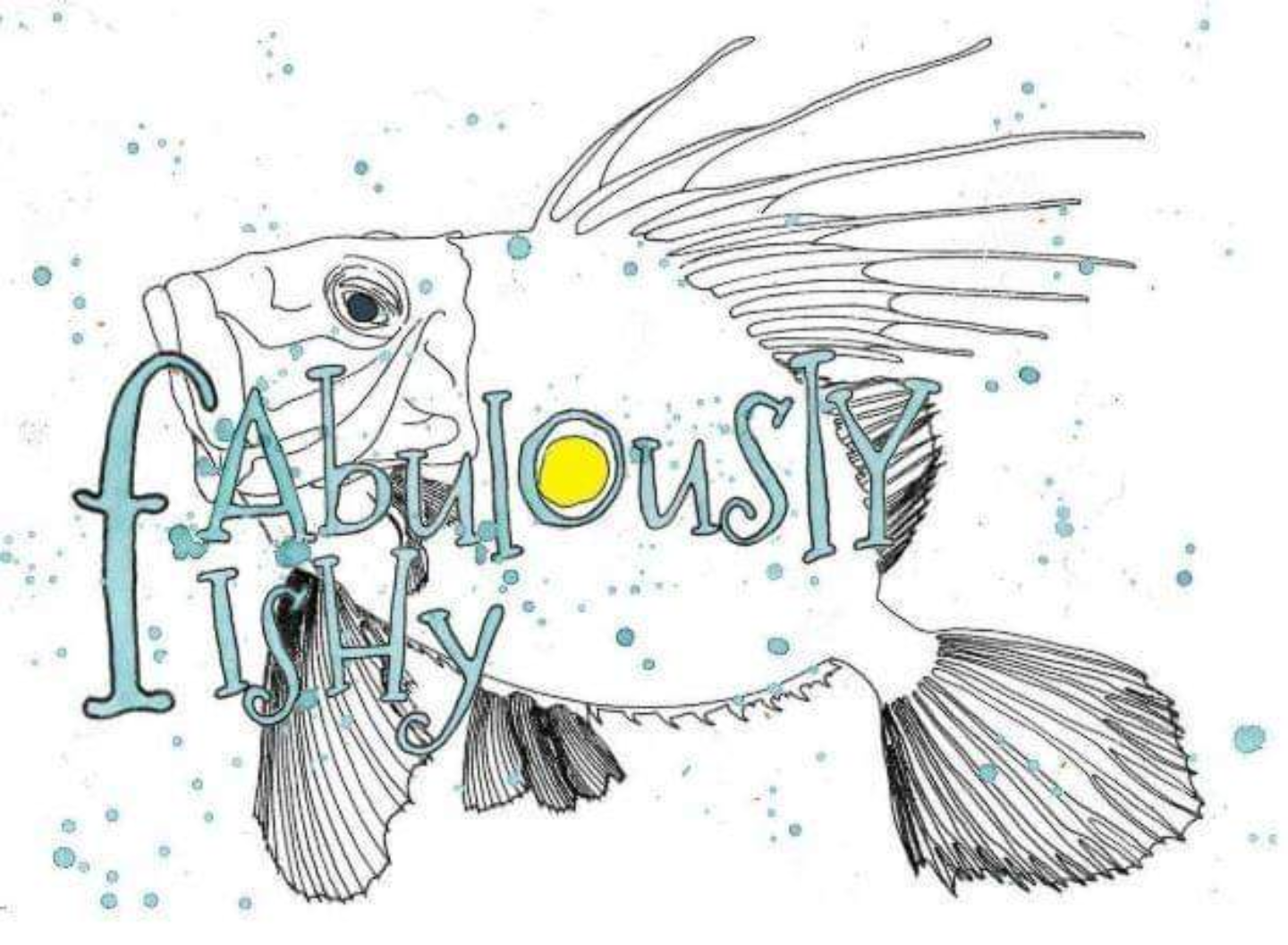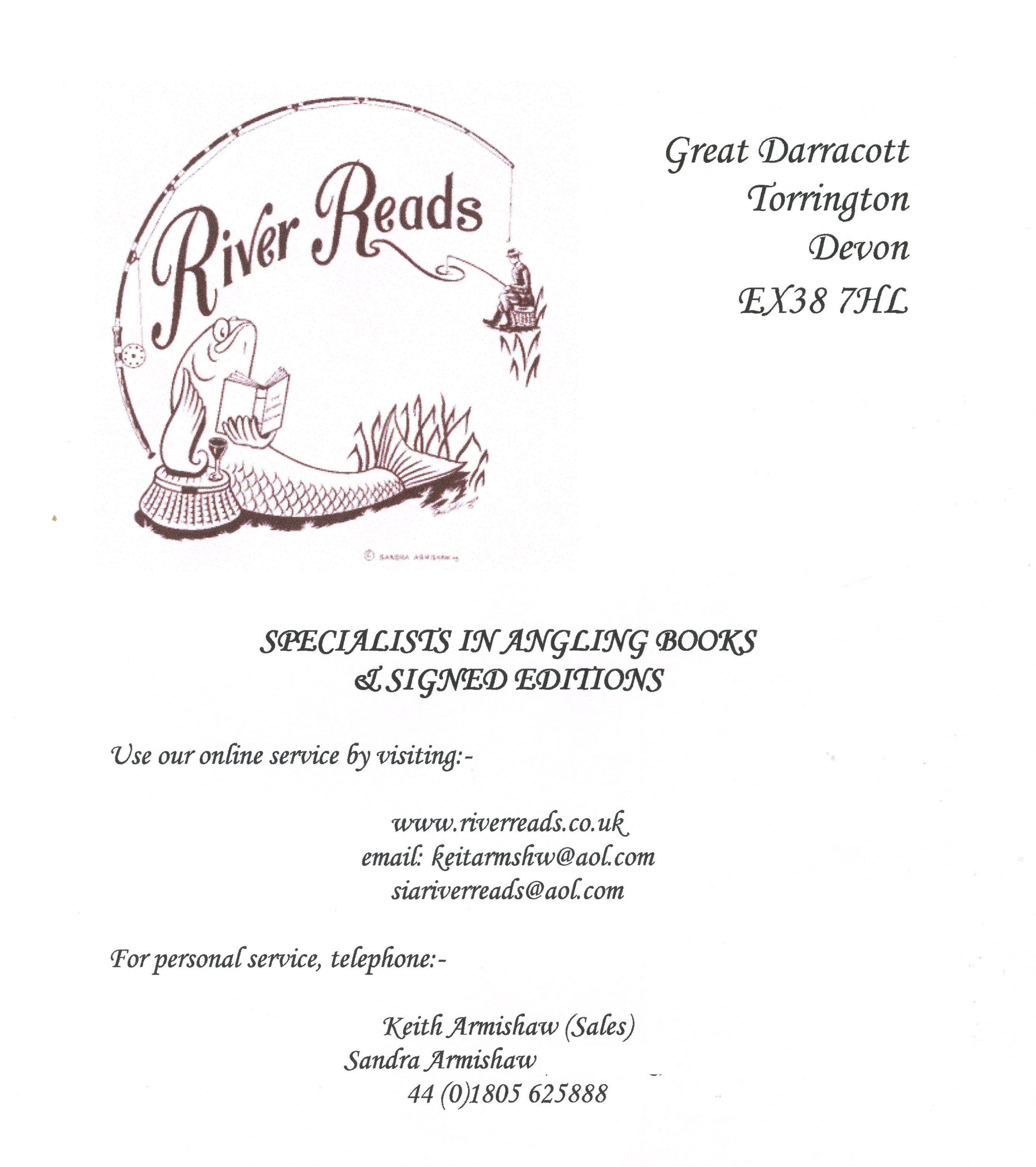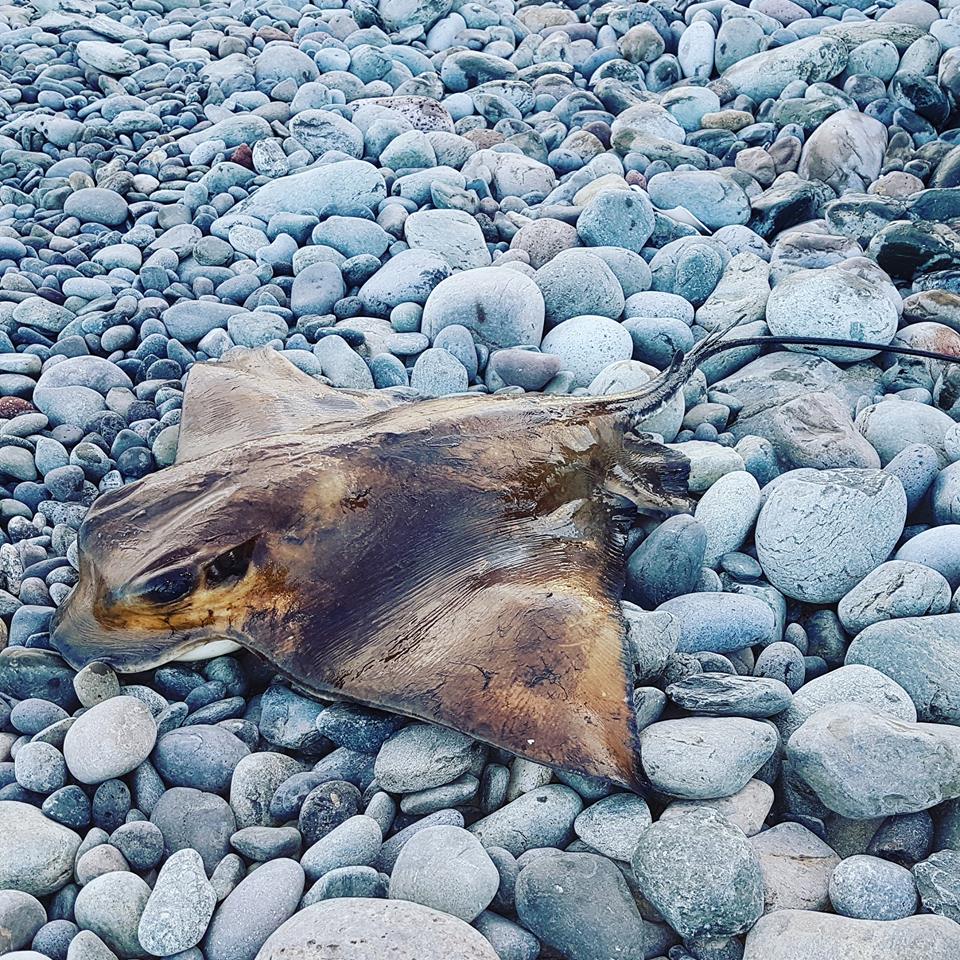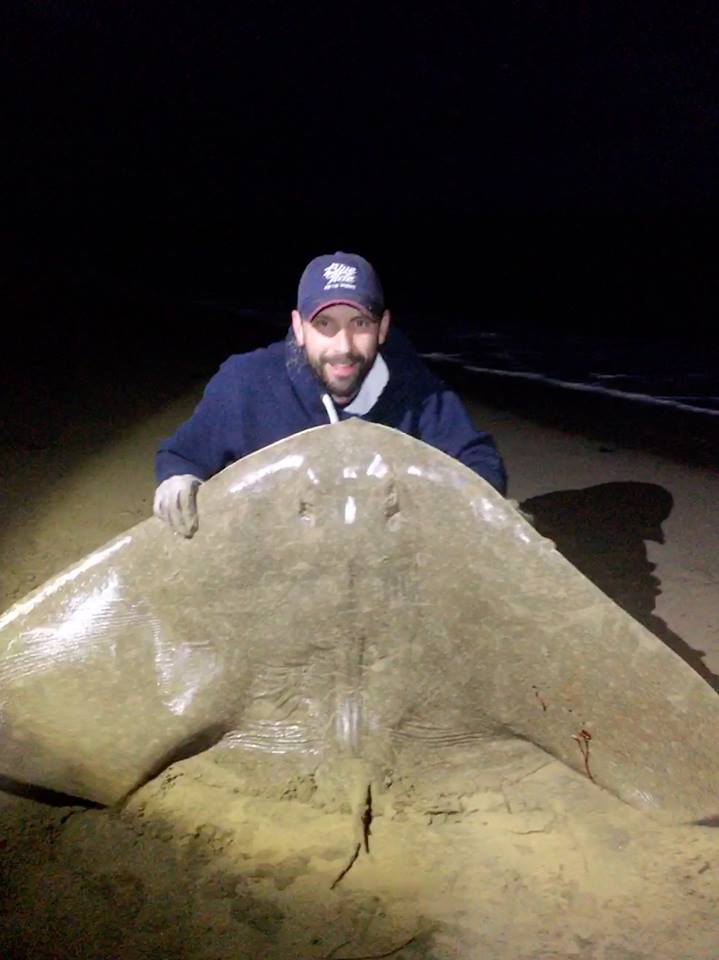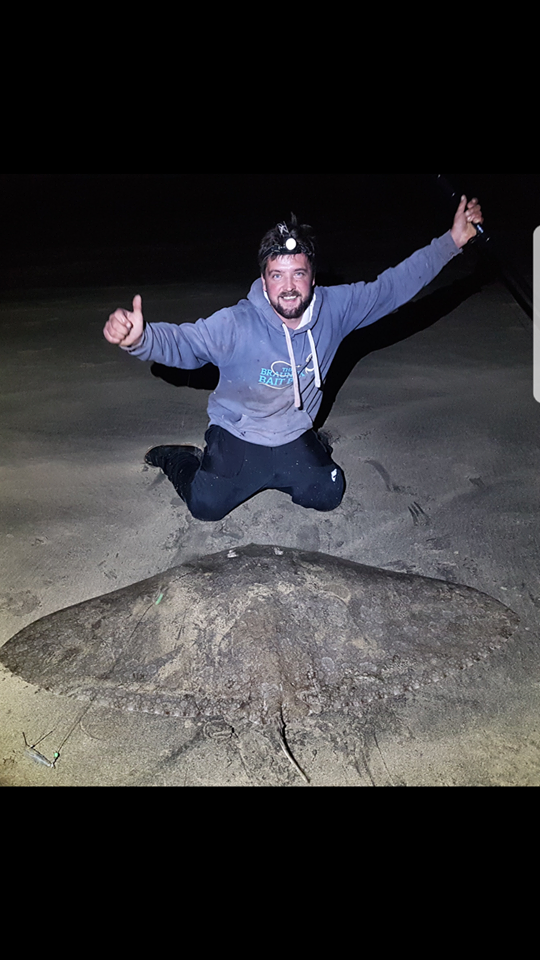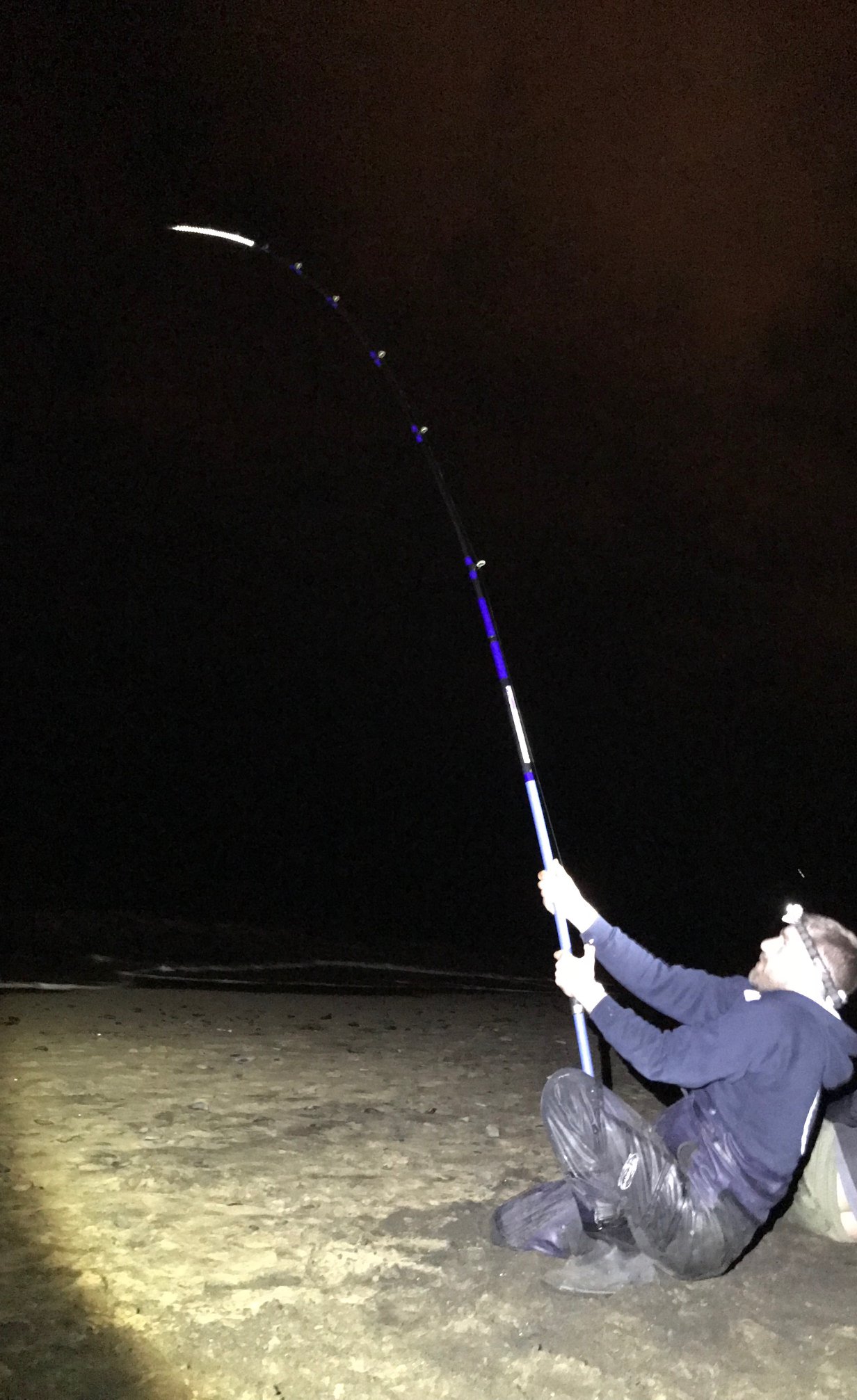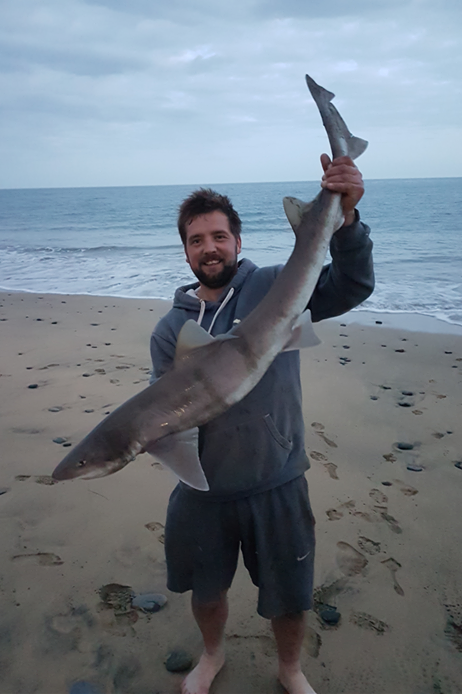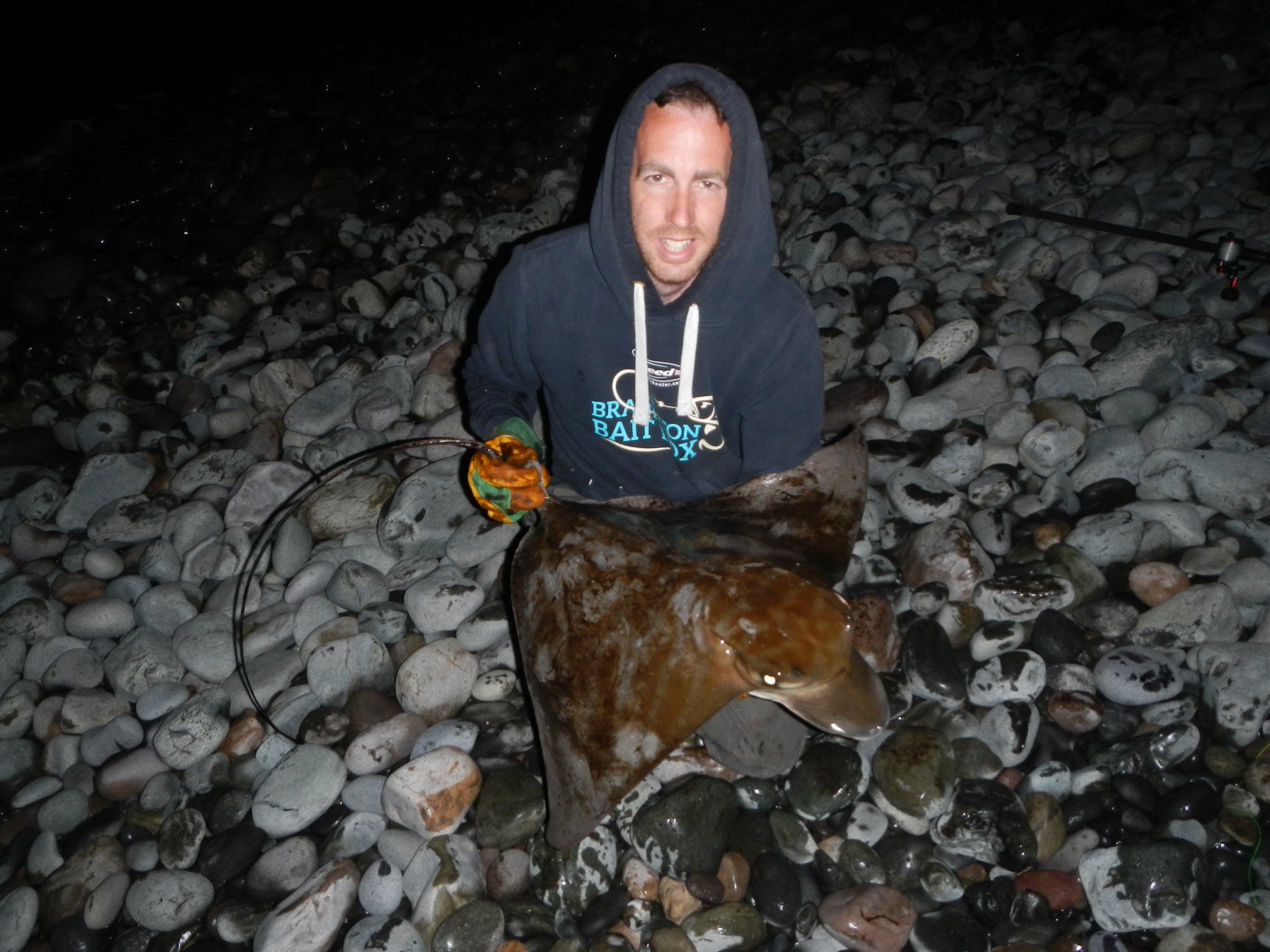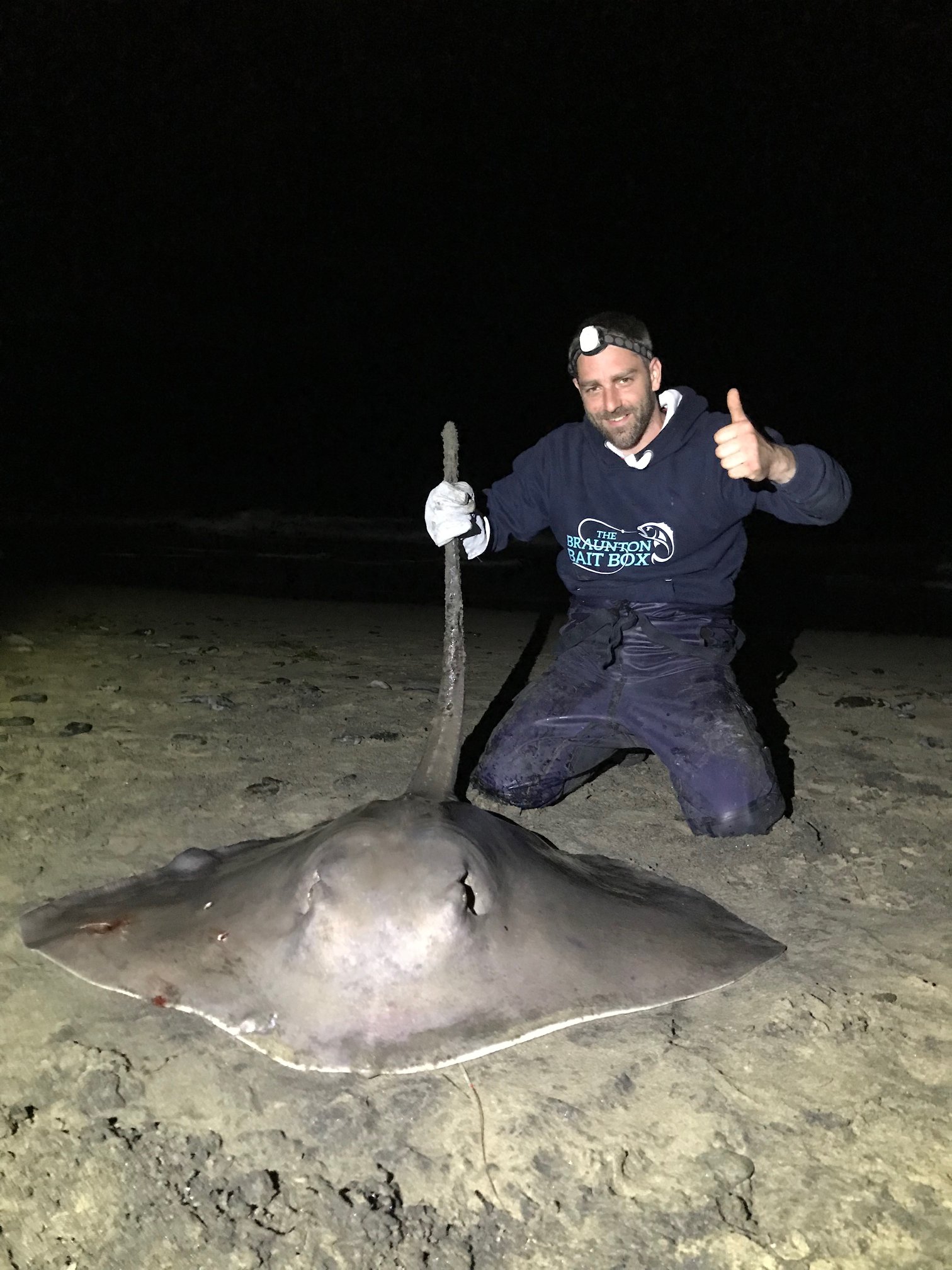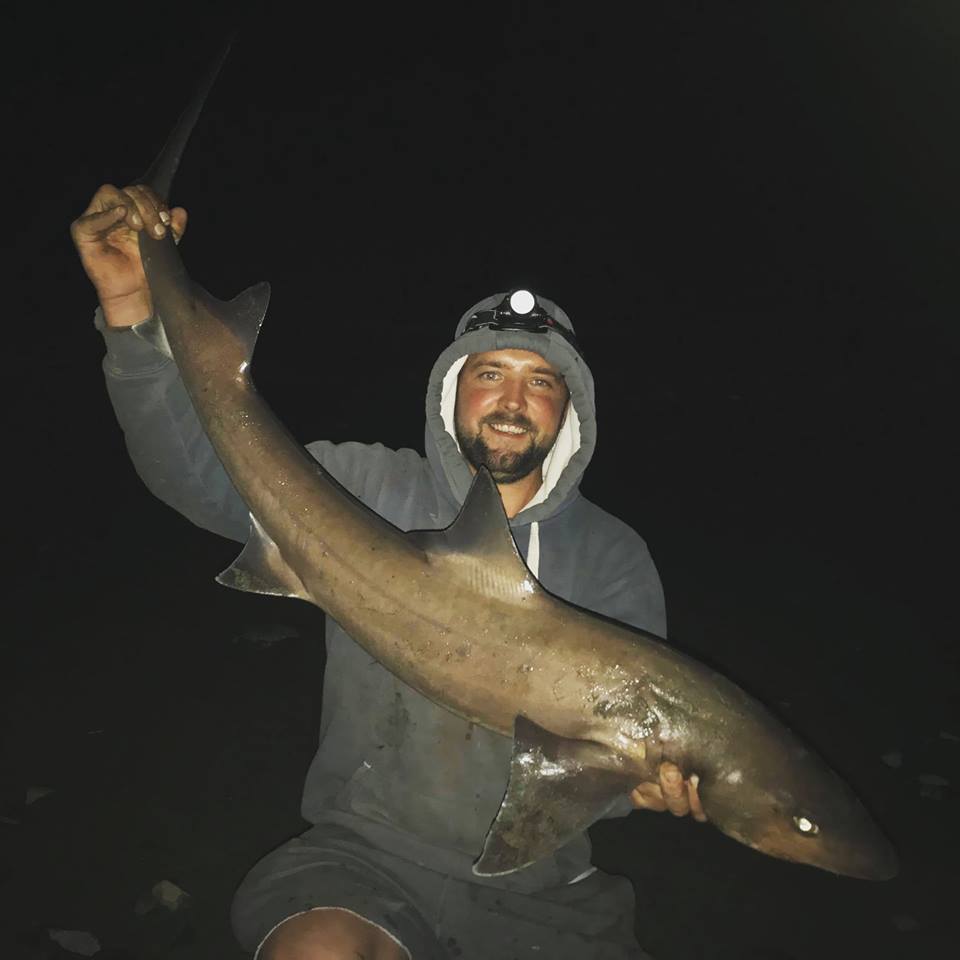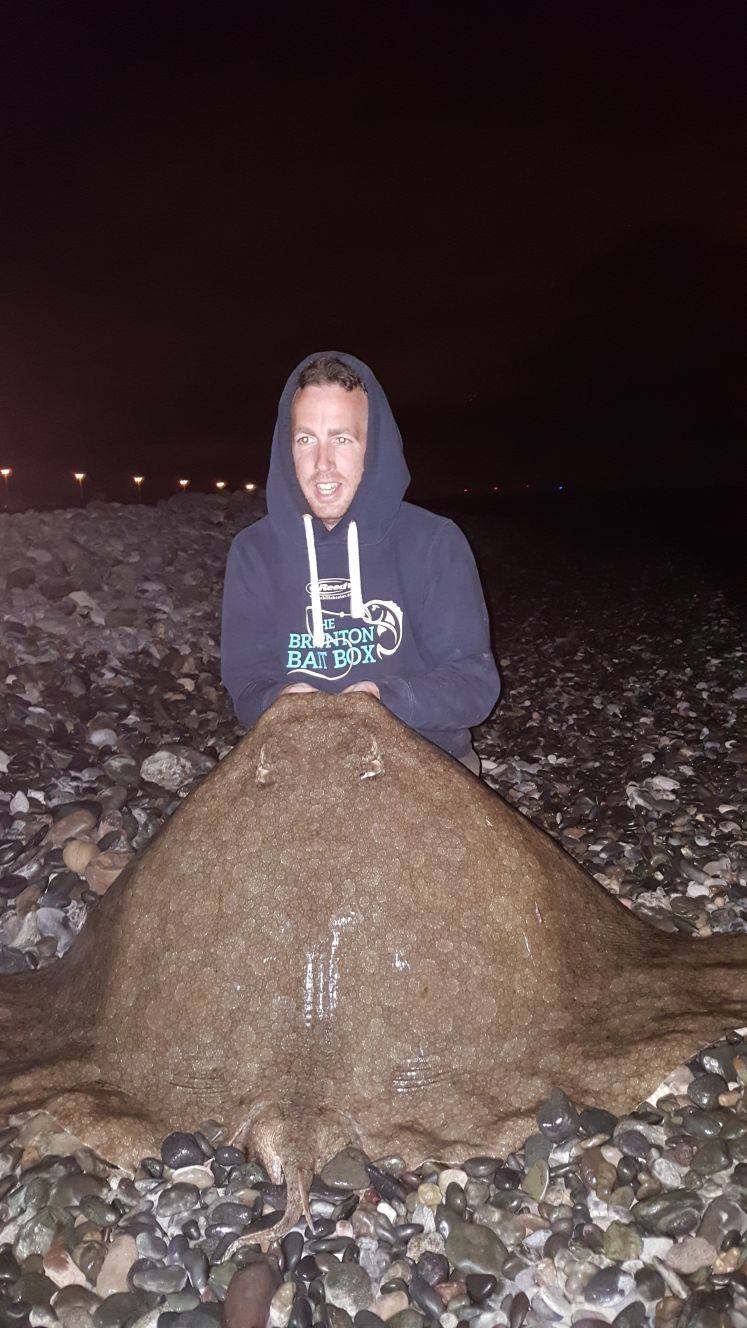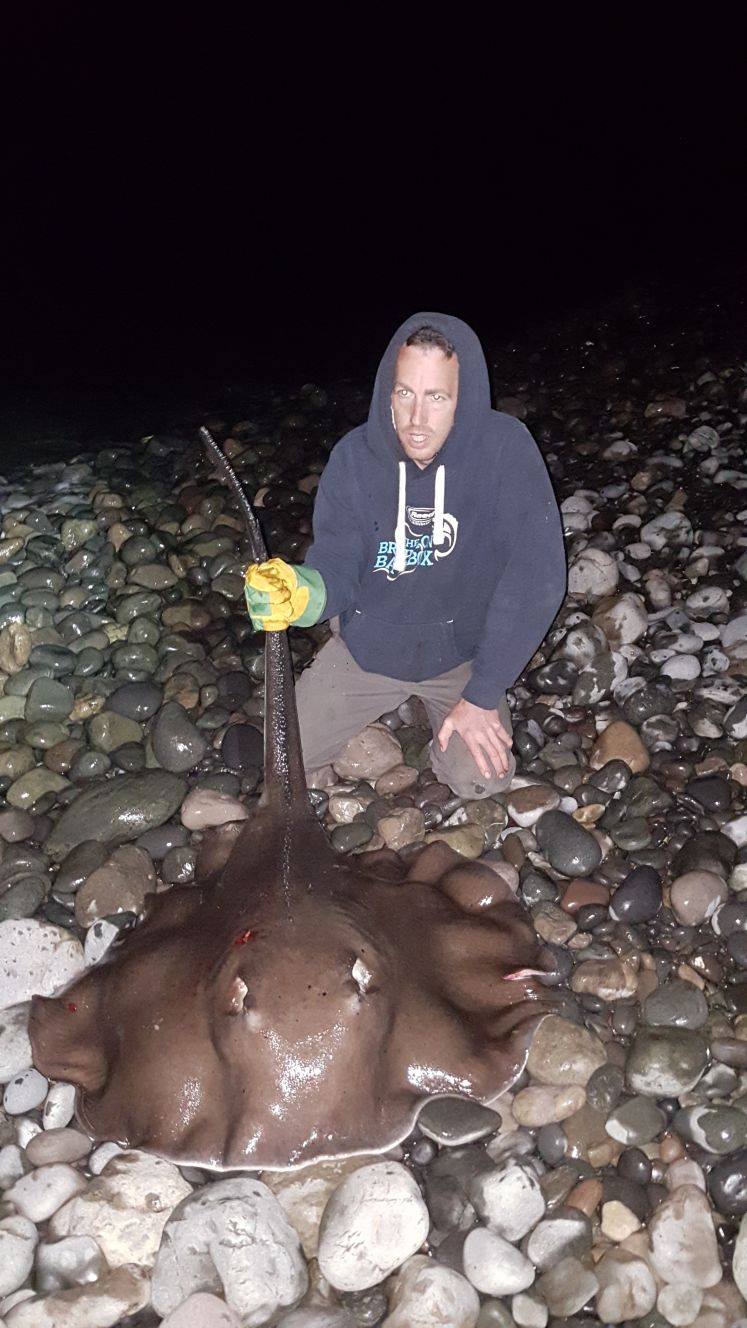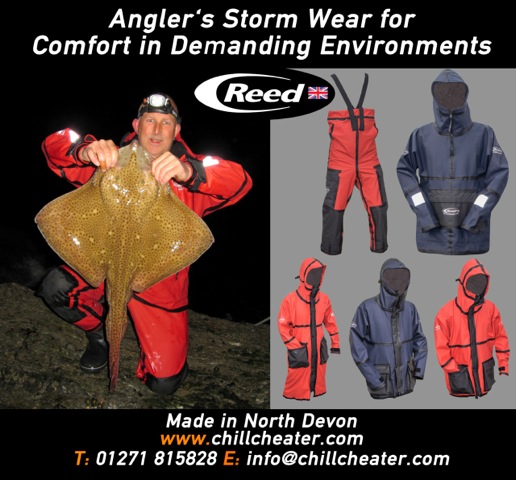European Lure Fishing Show 2018
The European Lure Fishing Show 2018 was held at Bristol last weekend and I was fortunate to visit the show with fellow Combe Martin SAC members Nick and Jack Phillips. This is the second year of the show and after hearing good reports from last year I thought it worth taking a look. The event focus’s on Lure fishing and Fly Fishing with an extensive range of products on display along with talks and demonstrations.
The best side of these shows is undoubtedly the opportunity to meet up with fellow anglers and swap tales with old friends.
We took time to listen to two talks; one on world wide fishing with Dave Lewis of Sea Angler with Dave giving sound advice on chasing those bucket list fish that take anglers to some stunning locations.

The second talk was delivered by Henry Gilbey and was a thought provoking one that revolved around the wearing of life-jackets. Henry told of two young brothers who tragically died whilst fishing off the North Cornish coast. The fact that Henry knew the mark well and that he had intended fishing it that day undoubtedly struck a cord. I know Henry and he is passionate about his fishing and has like most keen sea anglers had a few near misses.
After listening to Henry I visited the Art of Fishing stand and purchased two Crewsaver Buoyancy aids. One for myself and one for my son James. After close to fifty years of fishing I am all to aware of the statistics with anglers drowning every year I ask myself how likely am I to become one of those stats? The life jackets are not cumbersome and after a few minutes you forget you have them on. Why would you not wear one Henry asked? £70 is but a small price to pay if it saves your life?
It was noticeable that very few anglers attended Henry’s talk on safety at sea. I am sure that if Henry had been waxing lyrical about lure fishing many would have sat hanging on his every word. Health and safety isn’t sexy but it was probably the most important topic on the agenda and most chose to ignore it!
Strangely in all the years I have been fishing on the coast I have given only passing thought to my own safety. Yet I have had nightmares about fellow anglers being washed into the sea whilst I stand helpless on the shore. What would you say to their nearest and dearest?
Perhaps it is for others that you should don that life saving vest for lets face it if you get washed into the sea on a dark and stormy night without a life jacket your not going to worry for long.
A short film shot in conjunction with the RNLI on the North Devon Coast was a true eye opener as to what happens if you fall into the water wearing waders. I will share the film on my Facebook page when it is released. Take a few moments to watch.

Great to see Mark Underhill present and chatting to enthusiastic anglers about his first season at Wimbleball lake.

(Above) Angling Trust Blogger, Author and angling guide Dominick Garnett
The Fascination of Ilfracombe Aquarium
As an angler I guess it is inevitable that I have always been fascinated by aquariums and can remember clearly the excitement of viewing fish at close quarters within seaside aquariums whilst on holiday in Cornwall. The aquariums at Looe and Fowey were always fixtures on our annual family holiday to Cornwall especially if the weather was a little inclement.

During the Combe Martin SAC Fun Fish in September the Ilfracombe Aquarium team got involved and an invite to visit the aquarium that is tucked away in a corner of the pier car park followed. Hard to believe that the aquarium has been running for over fifteen years and is expanding its range of exhibits each year.
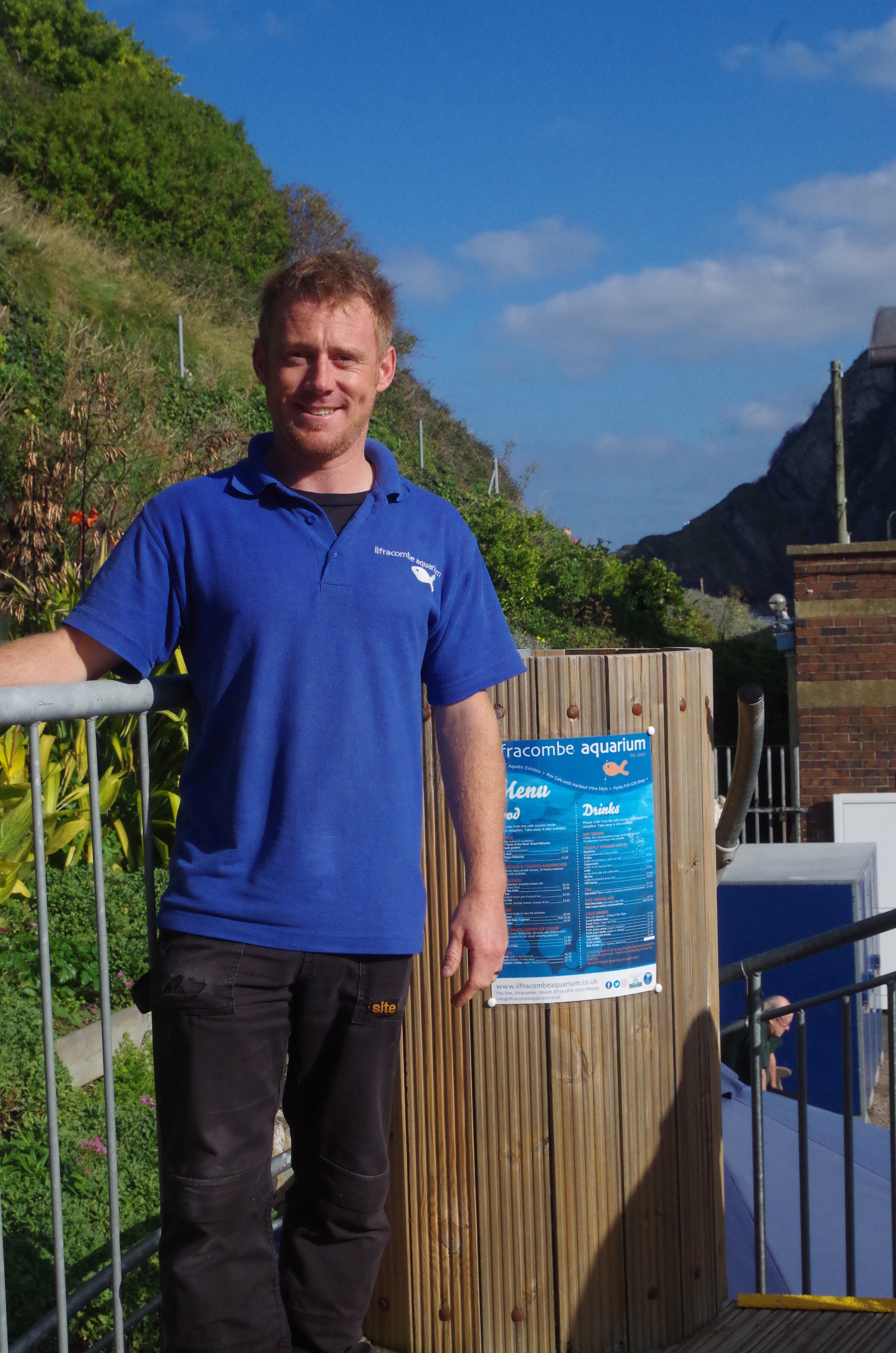
Pauline and I were greeted by Senior Aquarist Steve Corcoran who immediately made us welcome and infected us with his enthusiasm for the venue. The aquarium displays an amazing array of over 75 species to be found in the waters of North Devon from rivers high on the moors to the sea off Ilfracombe.
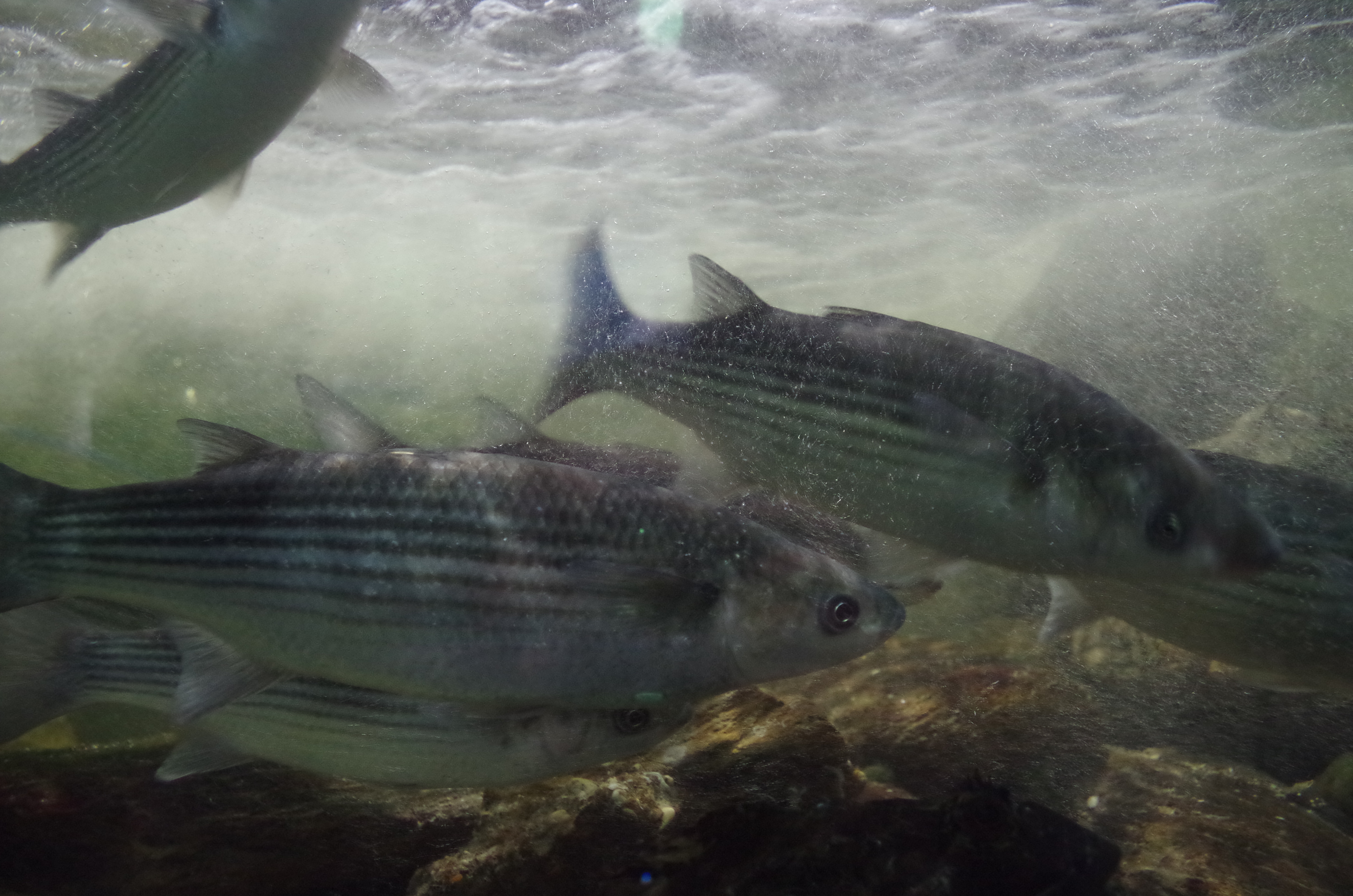
The exhibits are carefully chosen with only fish that are suitable for a captive environment selected. The welfare of the fish is undoubtedly paramount with all the fish in good condition and the tanks exceptionally clean.The aquarium are working to assist CEFAS based in Lowestoft with species acquisition. Several dragonets have been donated this year for breeding trials. They, however do not regulate our zoo license as such. A zoo license is issued through North Devon Council with practices needing to comply with Secretary of State ‘Standards of Modern Zoo Practice’ 2012. DEFRA are the public body that regulates these standards. . Any fish that outgrow their tanks have to be transferred to other aquariums such as Plymouth. For this reason large fish such as conger are not kept as they can grow very quickly and become aggressive if not fed frequently.
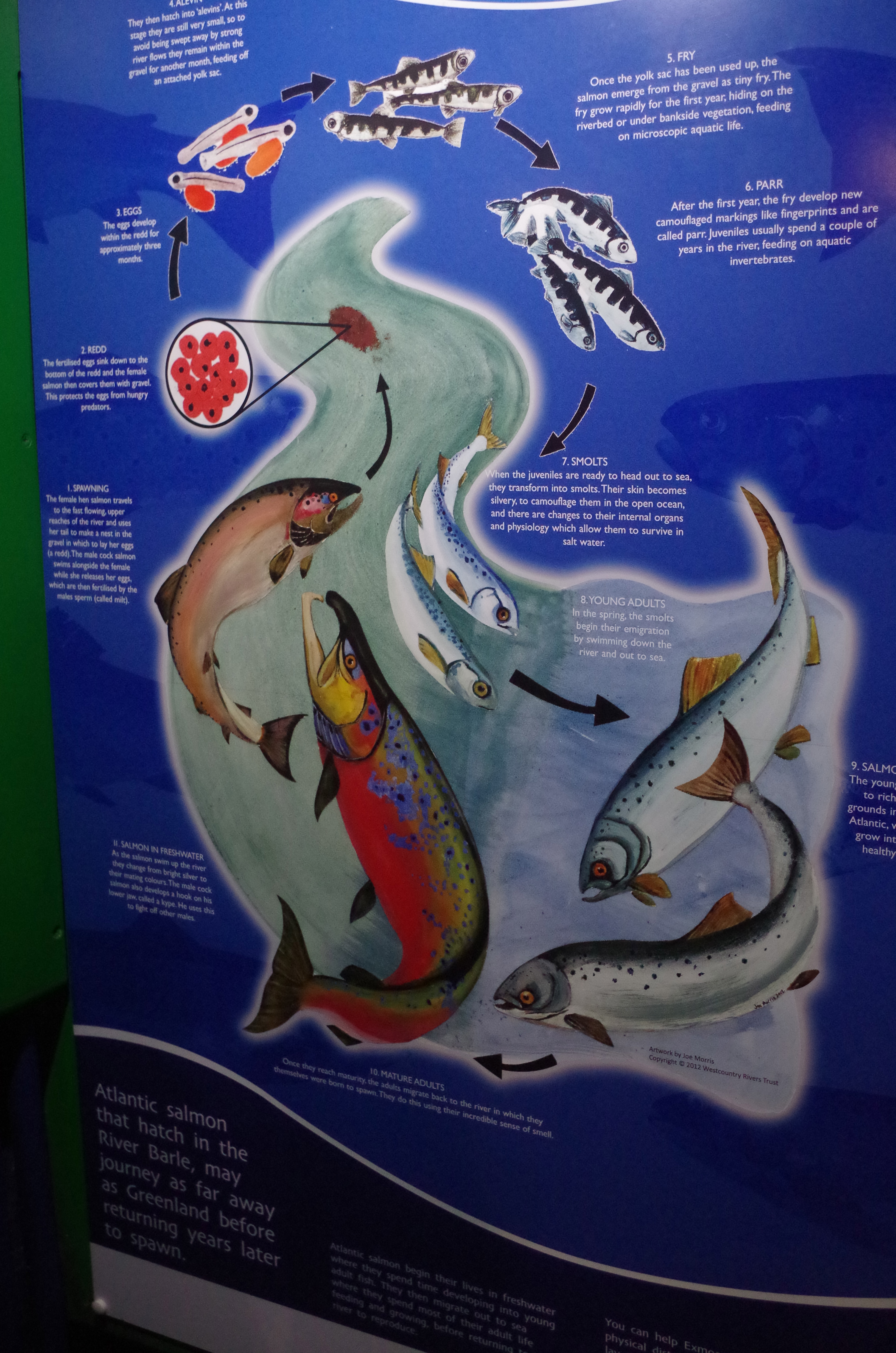
The whole place had a sort of Tardis like feel with far more on display than the exterior appearance of the building suggests. The display boards on the walk around are filled with fascinating facts about the environment, history and the array of captive creatures. Partnership with environmental groups such as the Marine Conservation Society and Exmoor National park is clearly evident.
The large seawater tank held a splendid selection of good sized fish from local waters including thornback ray, small eyed ray, spotted ray, pollock, bass, tub gurnard, grey mullet and plaice.
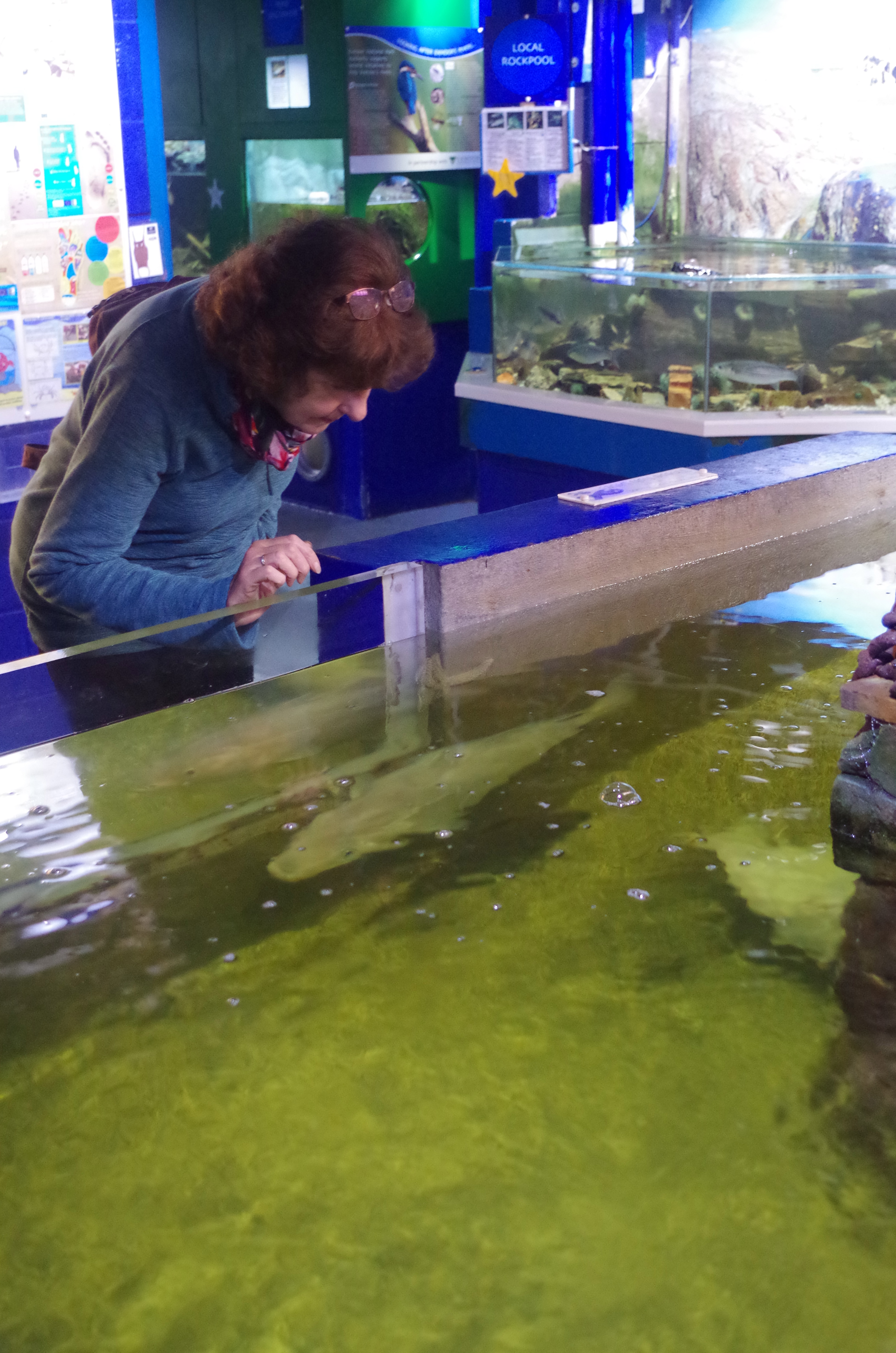
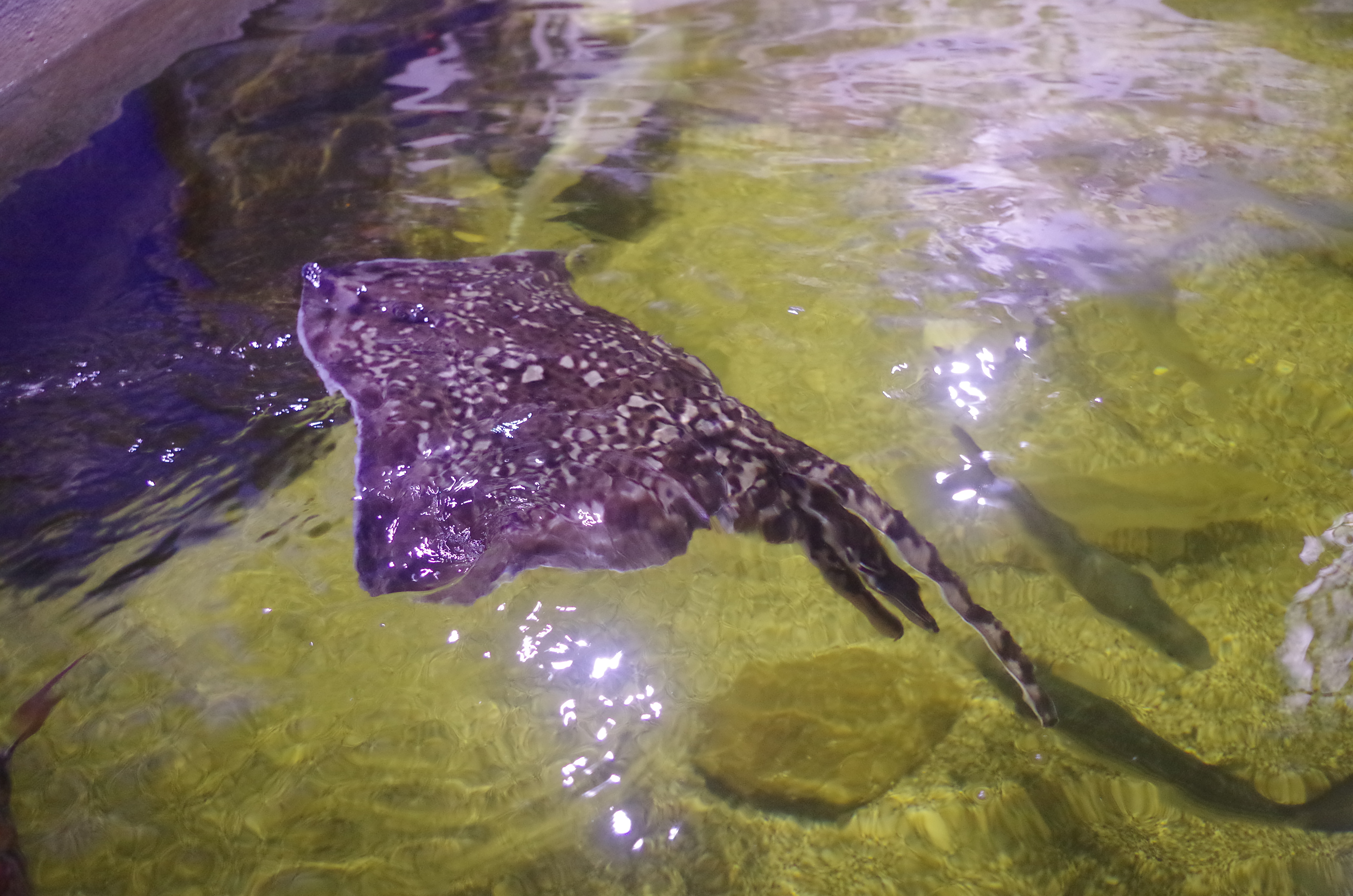 Surprisingly though it was not the big fish that we found to be most captivating but the smaller fish such as the dragonets with their stunning sapphire eyes and bristling demeanor. Pipefish, gobies, topknots, sole and sand smelt were amongst other fascinating fish on display.
Surprisingly though it was not the big fish that we found to be most captivating but the smaller fish such as the dragonets with their stunning sapphire eyes and bristling demeanor. Pipefish, gobies, topknots, sole and sand smelt were amongst other fascinating fish on display.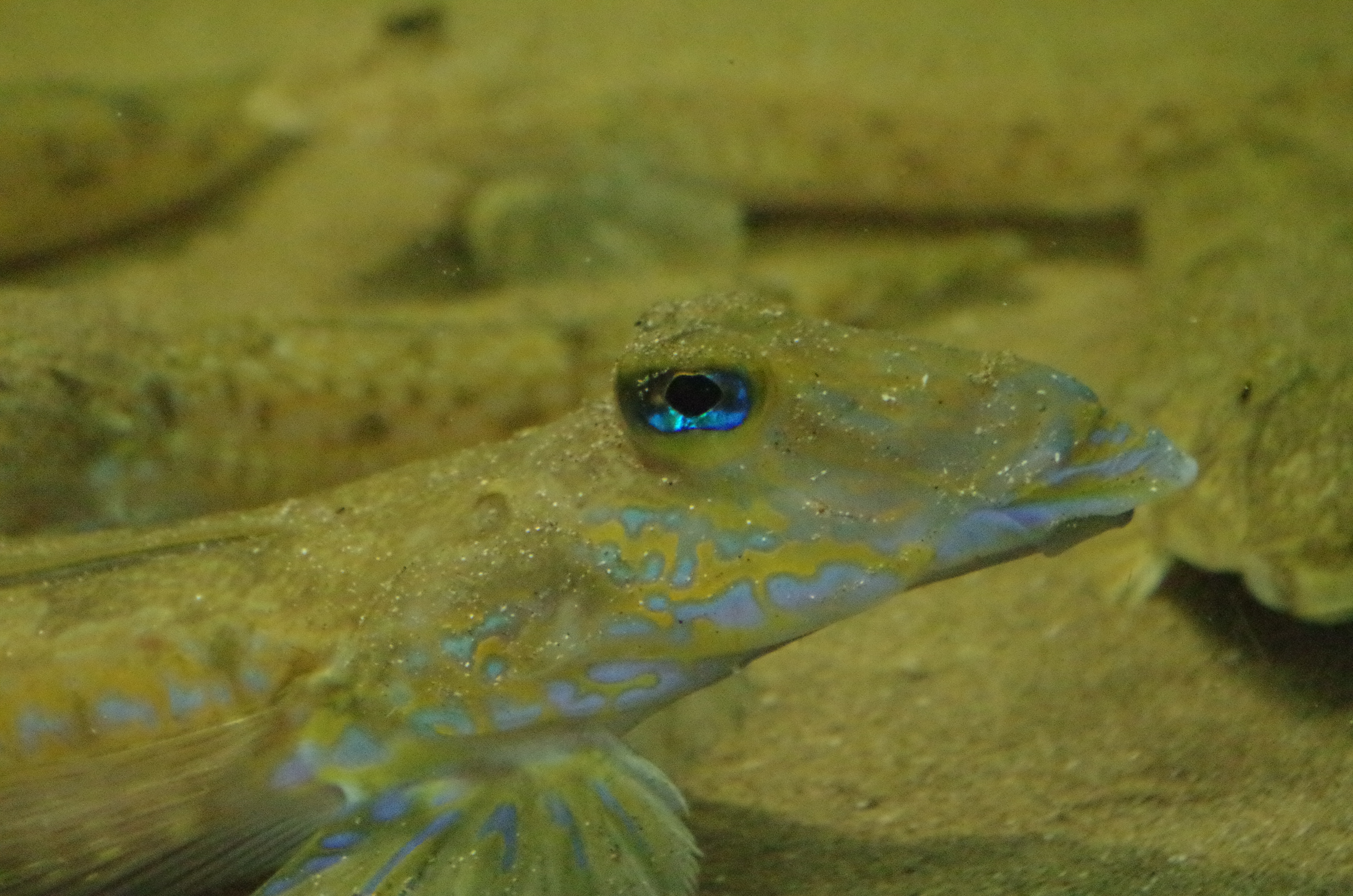
Other fascinating creatures were the tiny cuttlefish that had an almost alien appearance as they hovered within the water coming alive when Steve added some particles of food to the tank. Watching the way fish feed is an interesting aspect of the aquarium that will I feel fire the imagination of any visiting angler. Ammo Frozen baits are amongst the suppliers of food to the aquarium who are keen only to use fish that are caught using sustainable methods.
I was delighted to discover that some of the pouting swimming in the tanks were provided by anglers taking part in one of our previous fun fishing events.
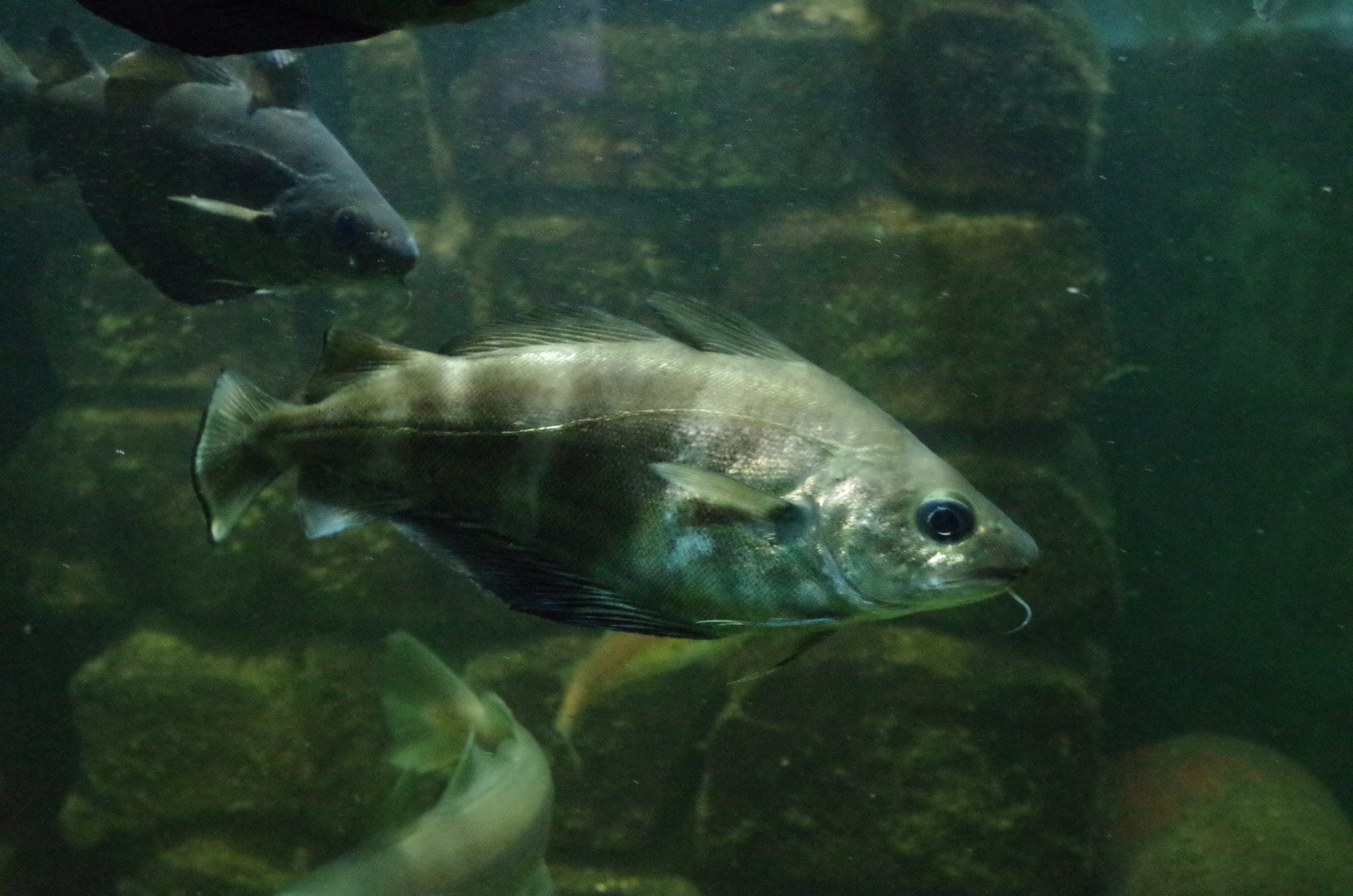
The complex has a pleasing top deck where a coffee and a snack can be enjoyed alfresco with a lower eating area if the weather is not kind.
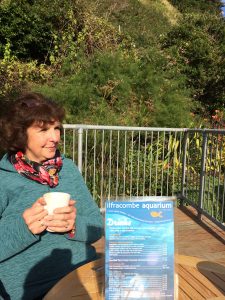
The gift shop has an array of quirky and fishy goods to tempt members of the family. I would highly recommend a visit before the venue closes for the winter at the end of November. 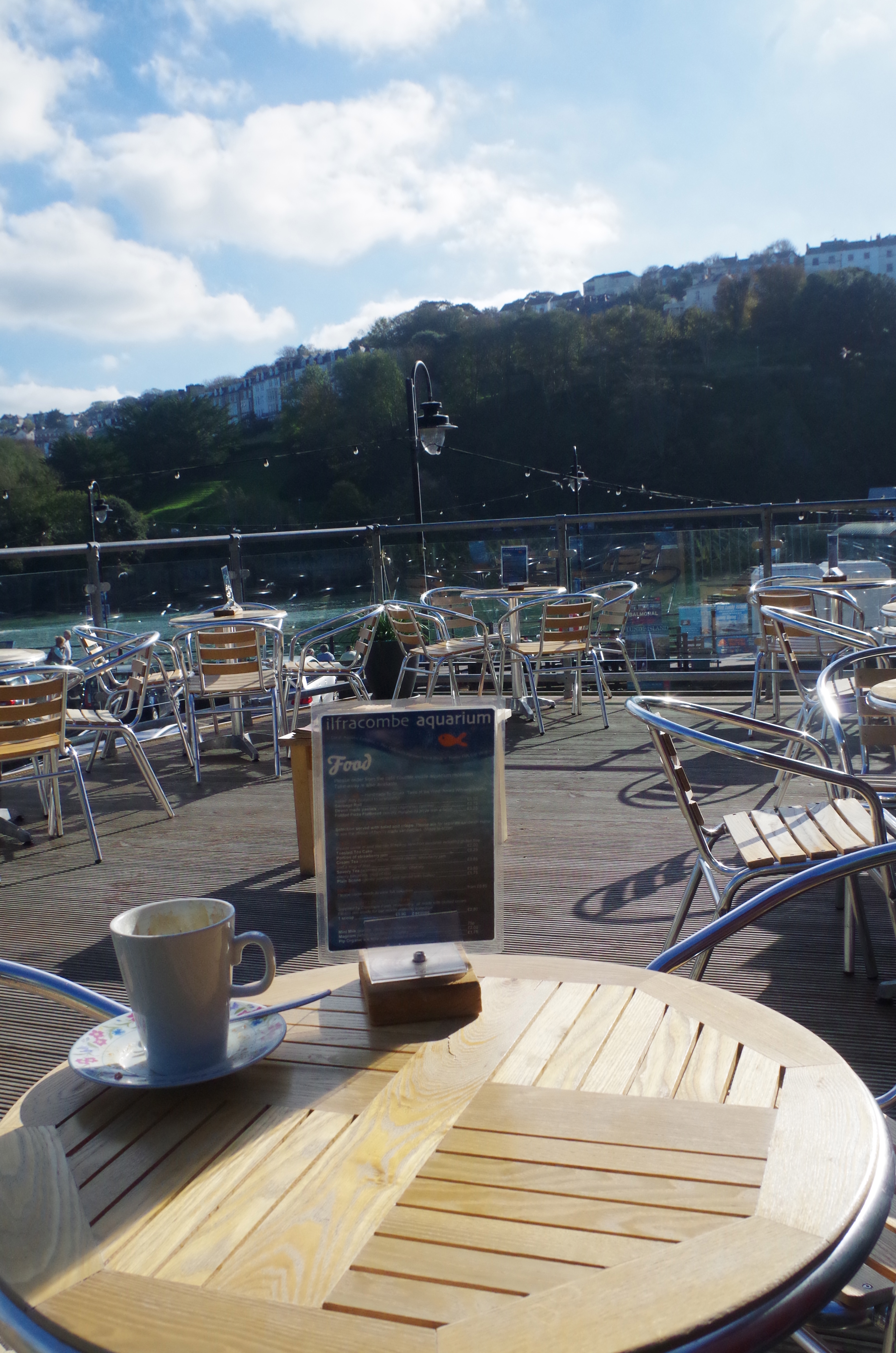
A matter of perspective
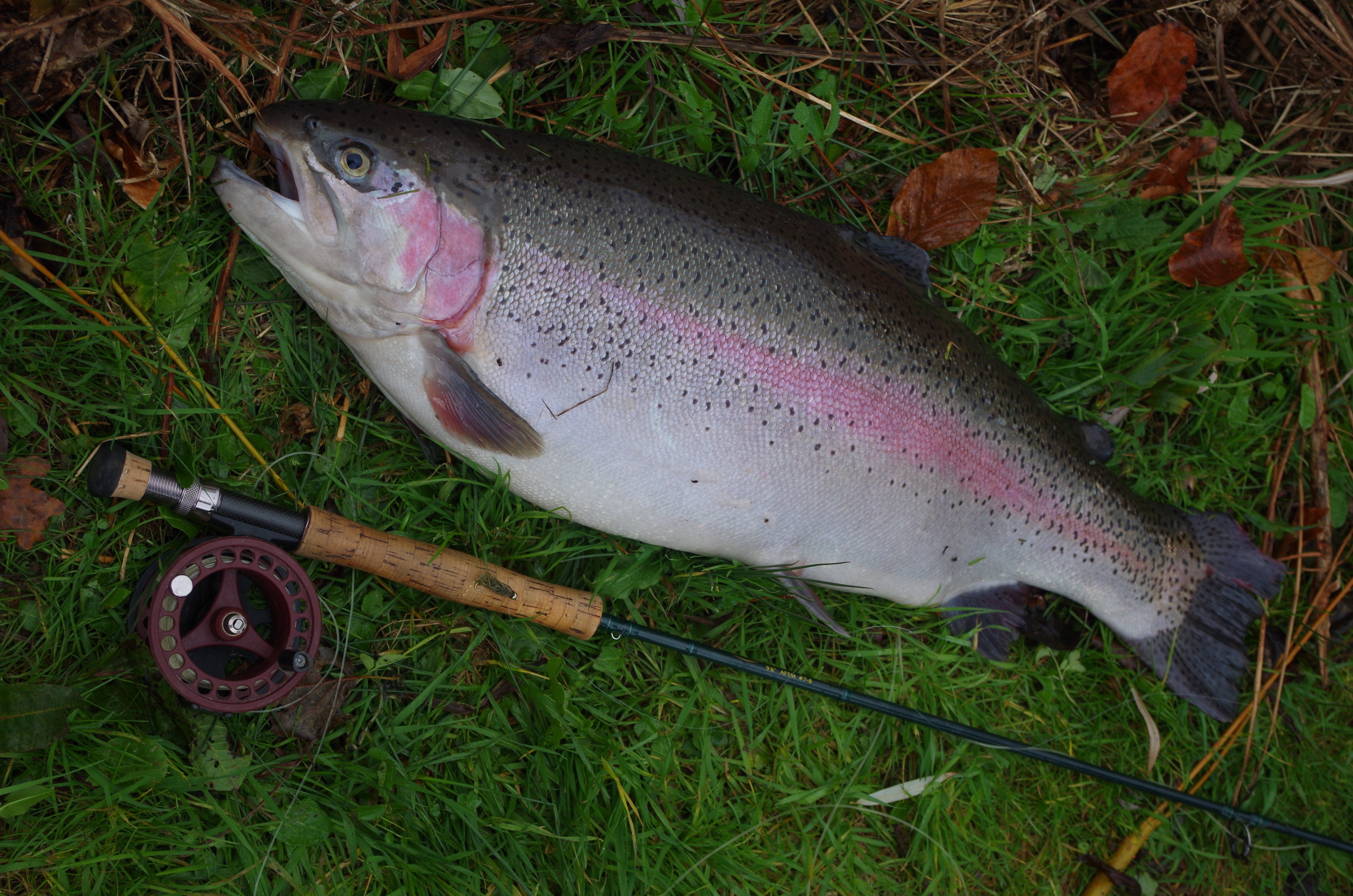
A matter of perspective
Fishing is at times a complex pastime full of paradoxes’, dilemmas and moral issues that can stimulate passionate debate. Fly Fishing by its nature is perhaps even more prone to this than other forms of angling though I say this in part because this article is aimed at the Fly Angler. As an all round angler I am far from a fly fishing purist and resist the elitist view that fly fishing is somehow superior to other forms of fishing. Many hold fly-fishing in esteem as a more worthy style of fishing when compared to bait fishing or lure fishing. But where does this view come from?
As a young boy I fished a tiny stream and caught plenty of wild brown trout with buttercup flanks and crimson spots. My chosen technique was a wriggling red worm or pinch of bread flake. It was beside this tiny stream that I learned to read the water and develop that knack of knowing where to cast. Sadly that wonderful stream of my youth is devoid of fish but that’s another story.
As time went by I learnt to cast a fly and find fly-fishing an invaluable string to my angling repertoire. On its day it can be a very effective way to catch fish and on most days I would expect to catch more trout from a small stream armed with a lightweight fly rod than with a pot of worms. It is true that the worm might tempt that big trout living deep in a shady pool or one that has grown large as a result of cannibalistic tendencies but in general the delicate fly fisher will out fish the bait dangler.
When I developed a love for angling literature I delved into classic tomes that told of chalk streams and water meadows. In classic books such as “ A Summer on the Test” by John Waller Hills or “The Book of the Dry Fly” by George A.B Dewar these authors and others of that era were of course members of the upper classes who lived privileged lives that enabled them to cast into the almost sacred waters of the Test and Itchen. It was in these waters where the dogma of Halfords Dry Fly Purist attitudes where born.
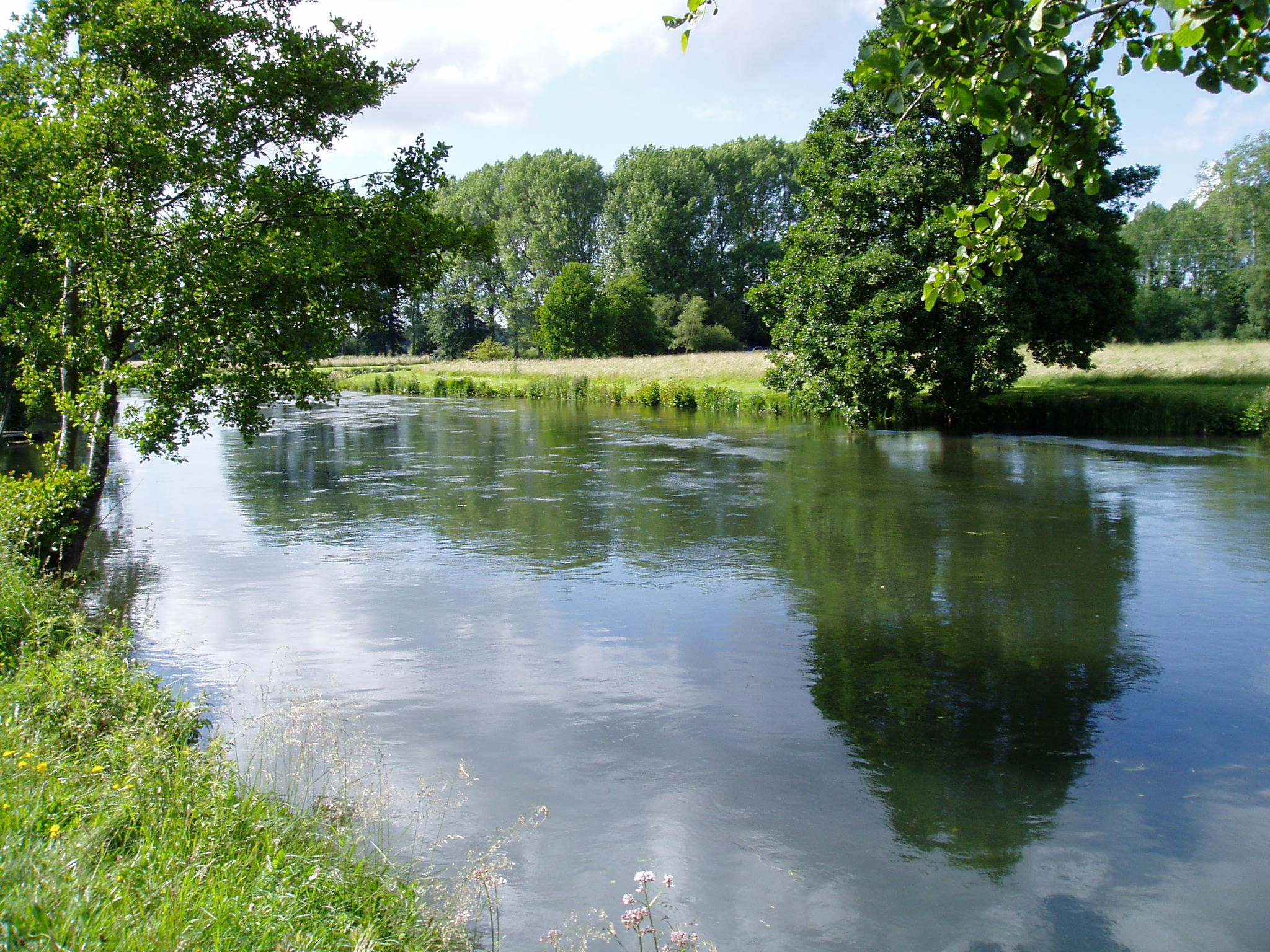
I fished the Test once several years ago and whilst it was a costly days fishing I enjoyed every minute of it. I caught on both dry fly and upstream nymph. It was a privilege to fish from manicured banks and tread the path of those with more money than I. I almost used the word wealth at that point but held back for money and wealth are different. The fishing was very enjoyable but in truth not as challenging as I had expected. These were not wily wild fish but stockfish in what has become an artificial fishery like many small Stillwater fly fisheries.
Trout waters are many and the trout within them varied. Each river, lake, loch and reservoir has its own peculiarities and it is this rich variation that gives fishing its fascination. There are different approaches to trout fishing and we as anglers contrive to introduce a complex web of rules and values.
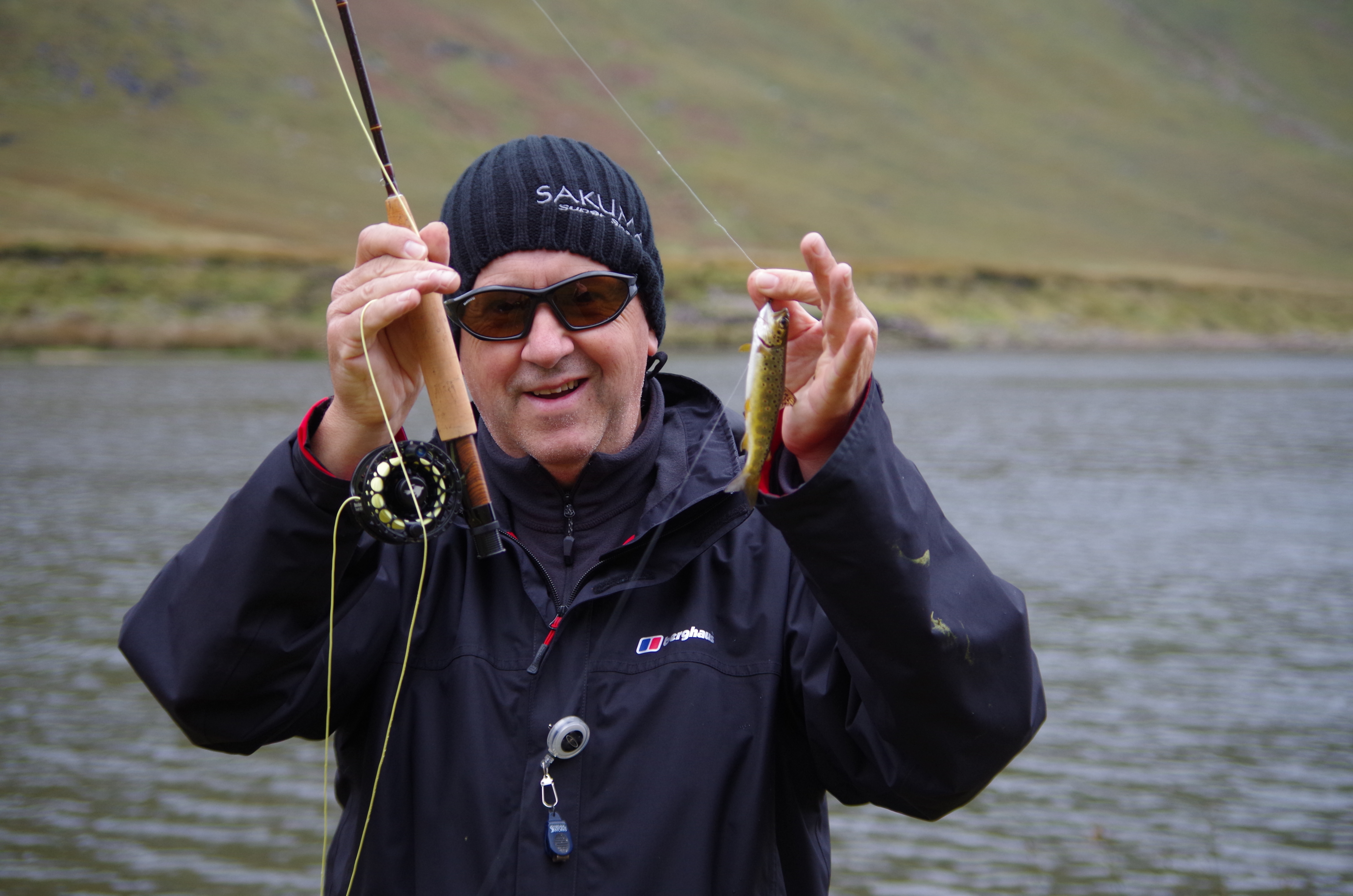
Modern trout fishing has many parallels with society reflecting morals and desire. The put and take trout fisheries that emerged in the late seventies brought an expectation amongst many to get their limit of big trout. As a result prices were driven up as fishery owners tried to cater for the demand for big trout. Anglers measured their success with the size of the fish they caught a plump 10lb or even 20lb rainbow being the dream.
Sadly as time has passed by many anglers have developed unrealistic expectations and have lost sight of the true essence of fly-fishing. Fortunately I see a slow change as many are now seeing the value in wild fish in tumbling brooks and streams. A fishing world in miniature where it is not the size that matters, more the beauty of the quarry and the natural surroundings from which it is caught. The brief admiration of a jeweled trout before it is slipped carefully back into clear water.
There is undoubtedly a place for well-stocked artificial waters and at times it is fun to catch a big stocked trout. It is also exciting to catch stocked rainbows from reservoirs using modern methods but it is surely that moment of delightful deception that is equally thrilling from a rambling brook especially if the whole act can be witnessed in clear and healthy water.
The measuring of fish by sheer size is perhaps that reflection upon society where we want it all bigger better and now. Surely utopia is a day of fishing ahead where there is no rush and all that matters is to momentarily connect with the pulsing life in that world beneath the surface. To put it in monetary terms where lies the best value? A full day wondering the stream for priceless spotted jewels surrounded by natures finest or a dash to catch a limit of stockies in a well kept stew pond?
Wayne Thomas
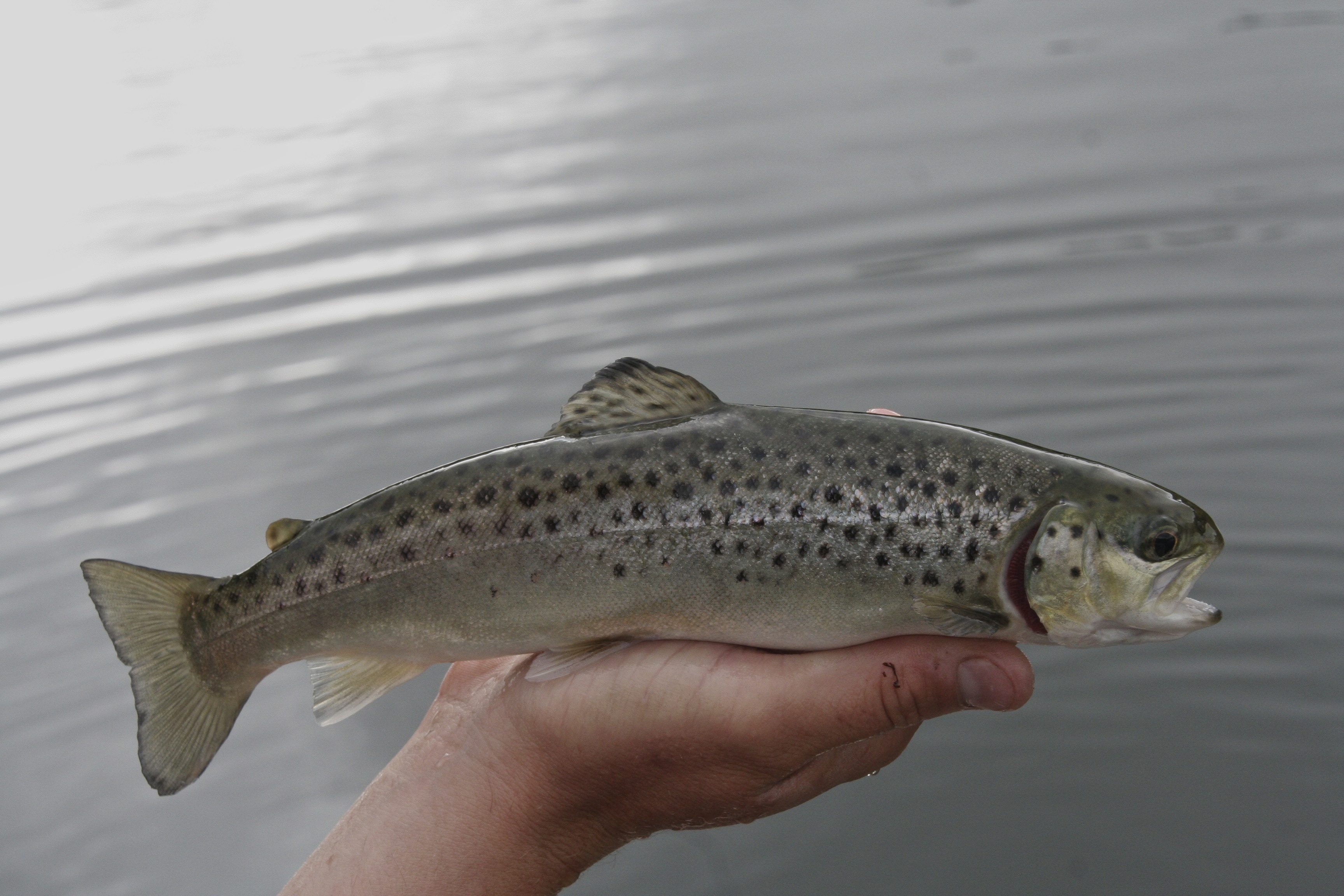
RISING RIVERS SALMON and Memories
Salmon and sea trout anglers have been hoping for rain all summer to bring the local rivers into spate and bring fresh run migratory bars of silver into North Devon’s rivers. The rain that fell on Sunday whilst welcome was not enough to bring a substantial rise despite washing a great deal of sediment into the rivers. The Taw and Torridge both came up and ran dirty but have dropped back quickly. It is to be hoped that a few fish have been encouraged to move up river. A few anglers have cast a fly on the Taw and experienced rod John Kenyon fished the Weir Marsh and Brightly Beats of the Taw to tempt a fine fresh run salmon of 15lb using a Willie Gunn micro tube.
A few sea trout have been reported from the Torridge but no reports of salmon to my knowledge.
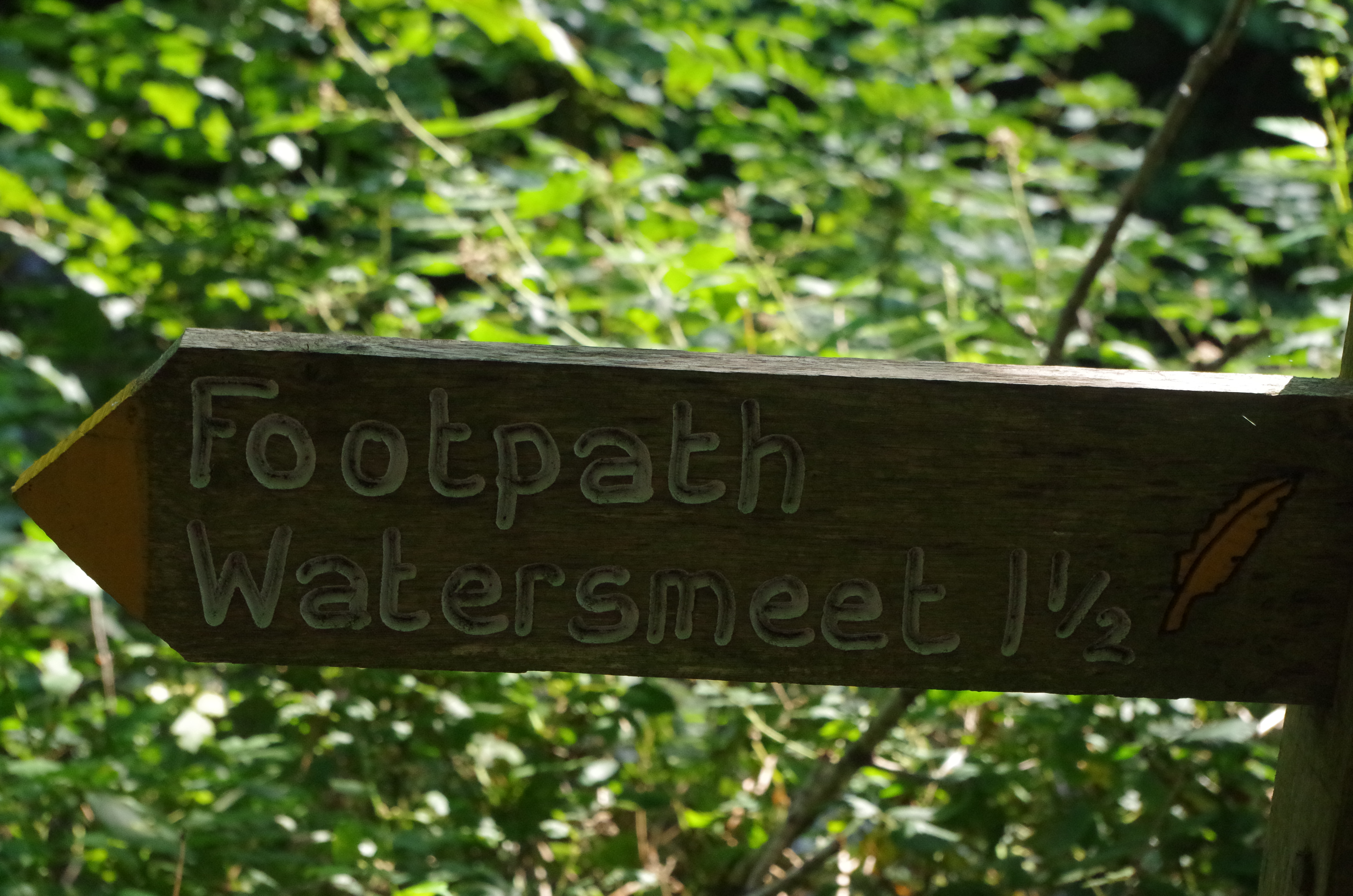
One of my favourite local rivers is the East Lyn that tumbles to the sea from Exmoor through the Watersmeet Estate. The riverside walk has been made even more popular following the TV appearance of Julia Bradbury in a program that showcased the beautiful wooded valley. I have many fond memories of the River Lyn and walking its rocky banks brings mixed feelings. The Lyn was undoubtedly an amazing salmon and sea trout fishery that offered splendid fishing at a low cost. I fished the river extensively over a twenty year period and landed a good number of salmon and sea trout. When I first fished the river back in the eighties individual local anglers often caught in excess of fifty salmon in a season. I never approached those figures but often walked away from the river with a brace of salmon caught on worm or spinner. Back then following a spate the river would be lined by anglers who traveled from far and wide to enjoy the short window of opportunity that followed each spate . When the river flowed with a colour of a fine ale salmon would seize the anglers Mepps spinner with gusto fighting the rod and line in a flurry of spray in the confines of the boulder strewn water course. As the water cleared the worm reigned supreme as anglers stalked individual salmon. Spotting the salmon is of course an art in itself with a keen eye required to locate the salmon in the turbulent flow. Experience built up over many seasons helped greatly for the salmon would frequent the same lies year on year enabling the anglers to target the right spots.
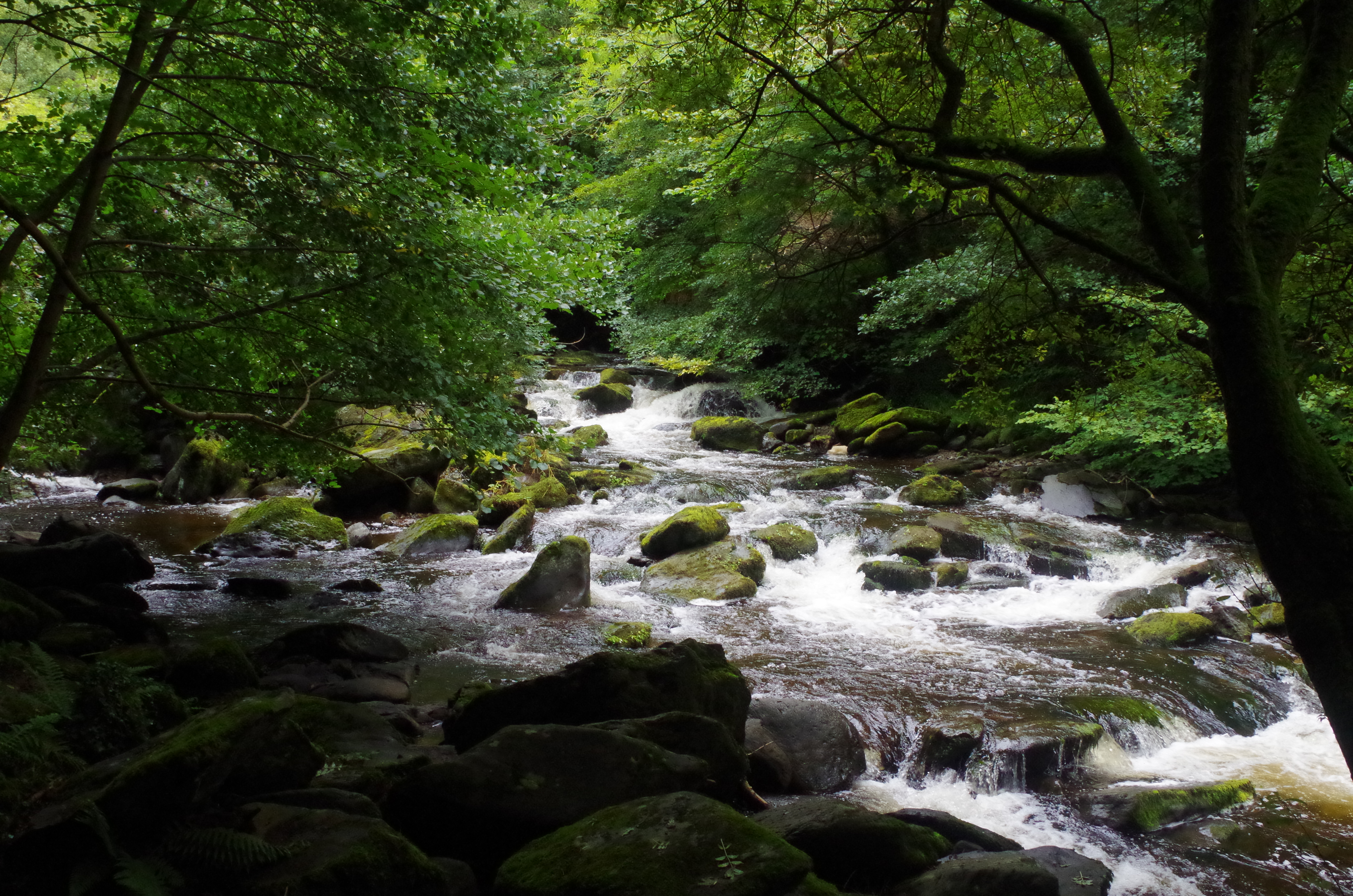
Pauline and I walked the river on August Bank Holiday following a day of heavy rain the water looked perfect as it tumbled towards the sea. Surely a Mepp’s flicked across the pools would bring a silver reward? But time has passed by and we saw no anglers searching the water. There was once a thriving community of anglers who fished this river who would meet up each season to share stories of past seasons and other waters. There was a darker side to fishing on the Lyn with snatching of fish endemic before the fishery bailiffs stamped their authority.
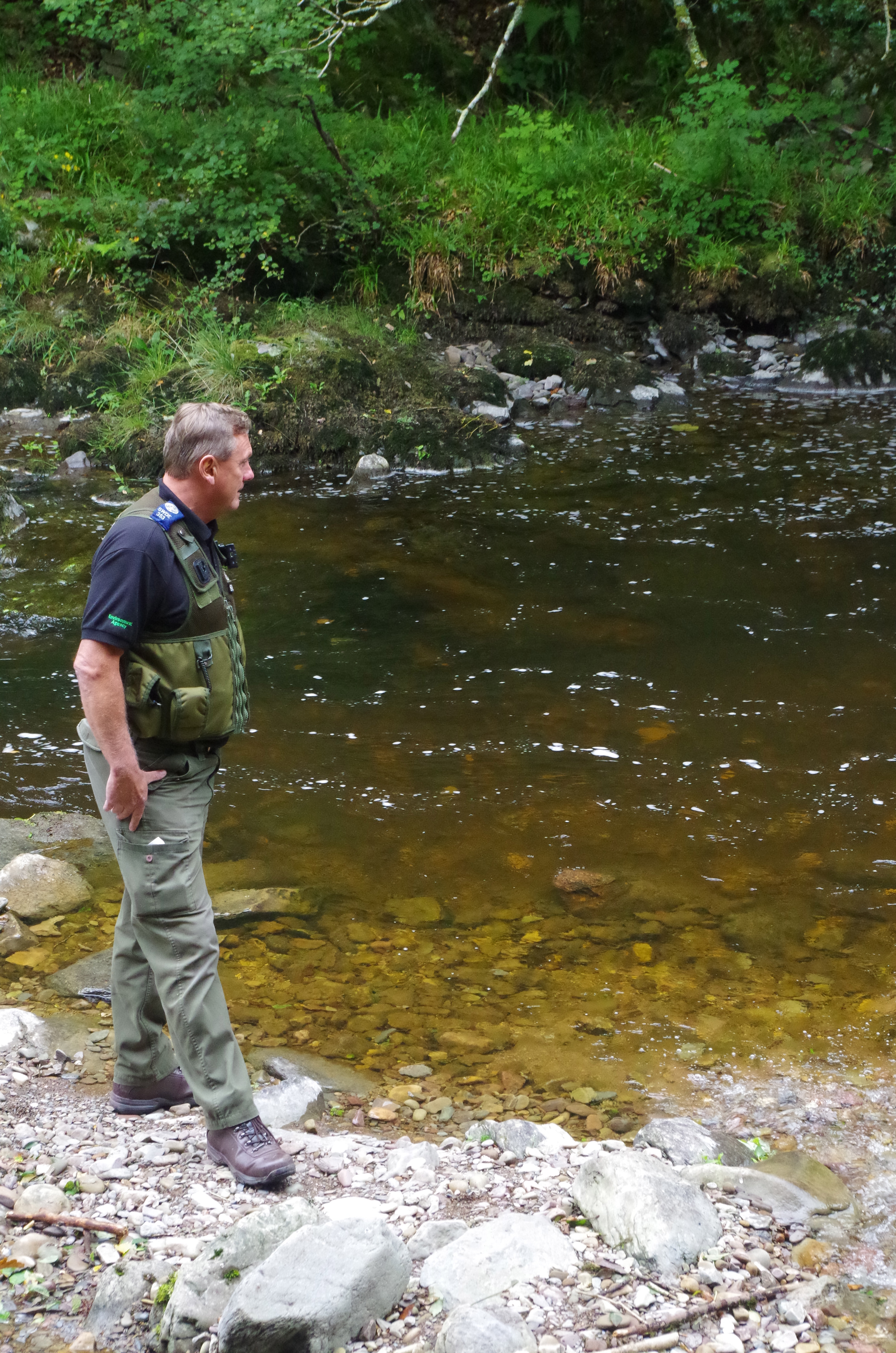
There are of course a few salmon still running the river and the occasional angler practicing catch and release. As we walked the river we came upon EA Fishery Officer Paul Carter who was hoping to glimpse a salmon as he walked the banks ensuring that any anglers fishing had their rod licence. Paul also has a vast array of memories of North Devon’s rivers and many characters who have trodden the fishermans paths. Today Paul has the latest technology to help record any hostile reaction from poacher or unlicensed fisher. Sadly the precious salmon stocks have dwindled and it is so important the present stocks are protected. Ironically the anglers who chased those silver bars for many years are those that care most for the future of the iconic fish.
We did see two fishers on our walk, a trout fisher and a heron. Long may there be fishers on the Lyn for a river without fish or fishers is somehow rather empty.
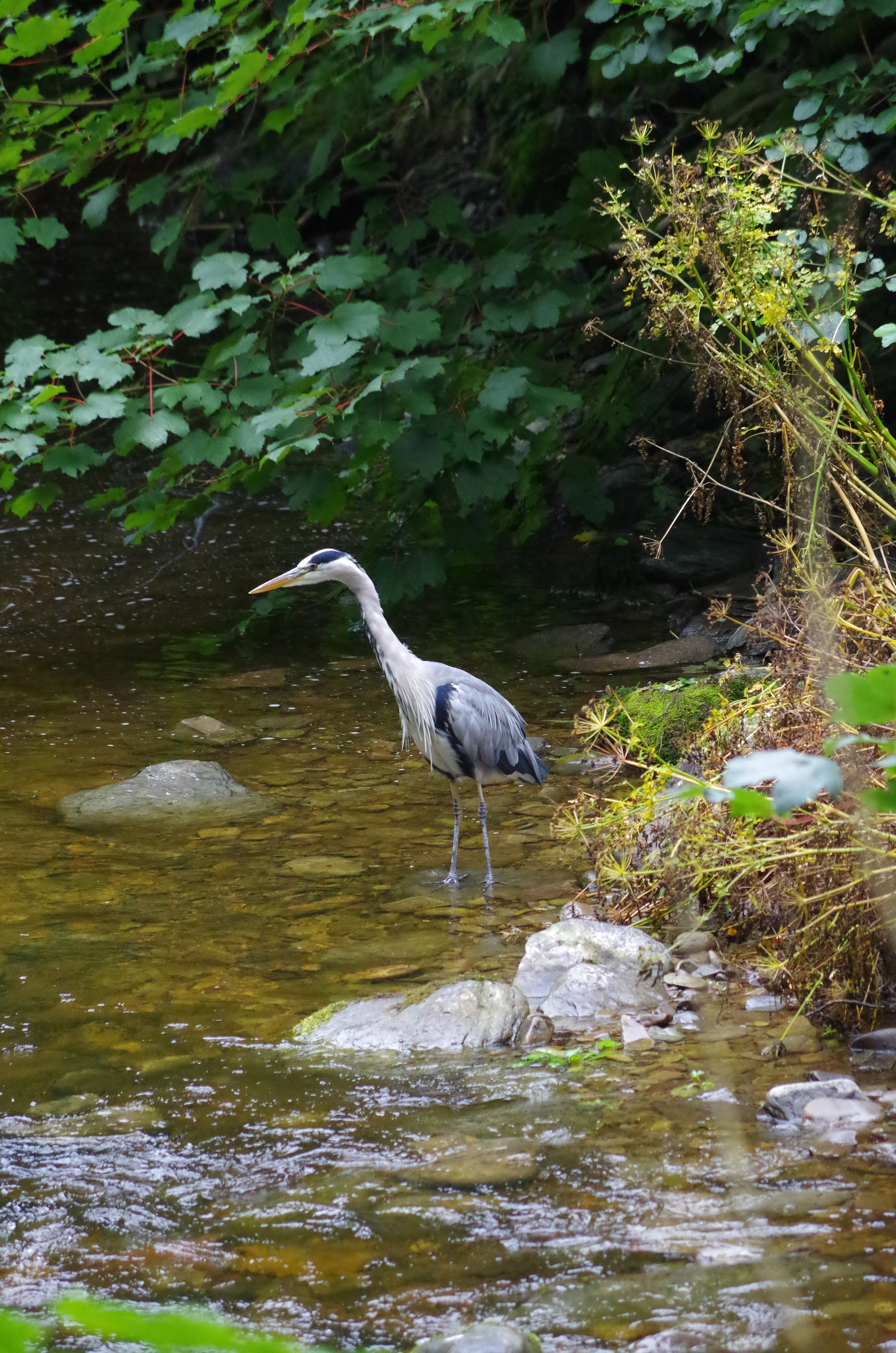
Charles Inniss to Give Torridge Talk
Angling Heritage are delighted to announce that Mr Torridge, Charles Inniss, author of the classic book Torridge Reflections is giving a talk about the River Torridge and its history, his life on the river and thoughts on the future at Torrington Museum (in the middle of Torrington) on Thursday 23rd August at 2.30pm. Entry is FREE, refreshments are provided so make sure that don’t miss this opportunity to meet the man and learn about the River Torridge.
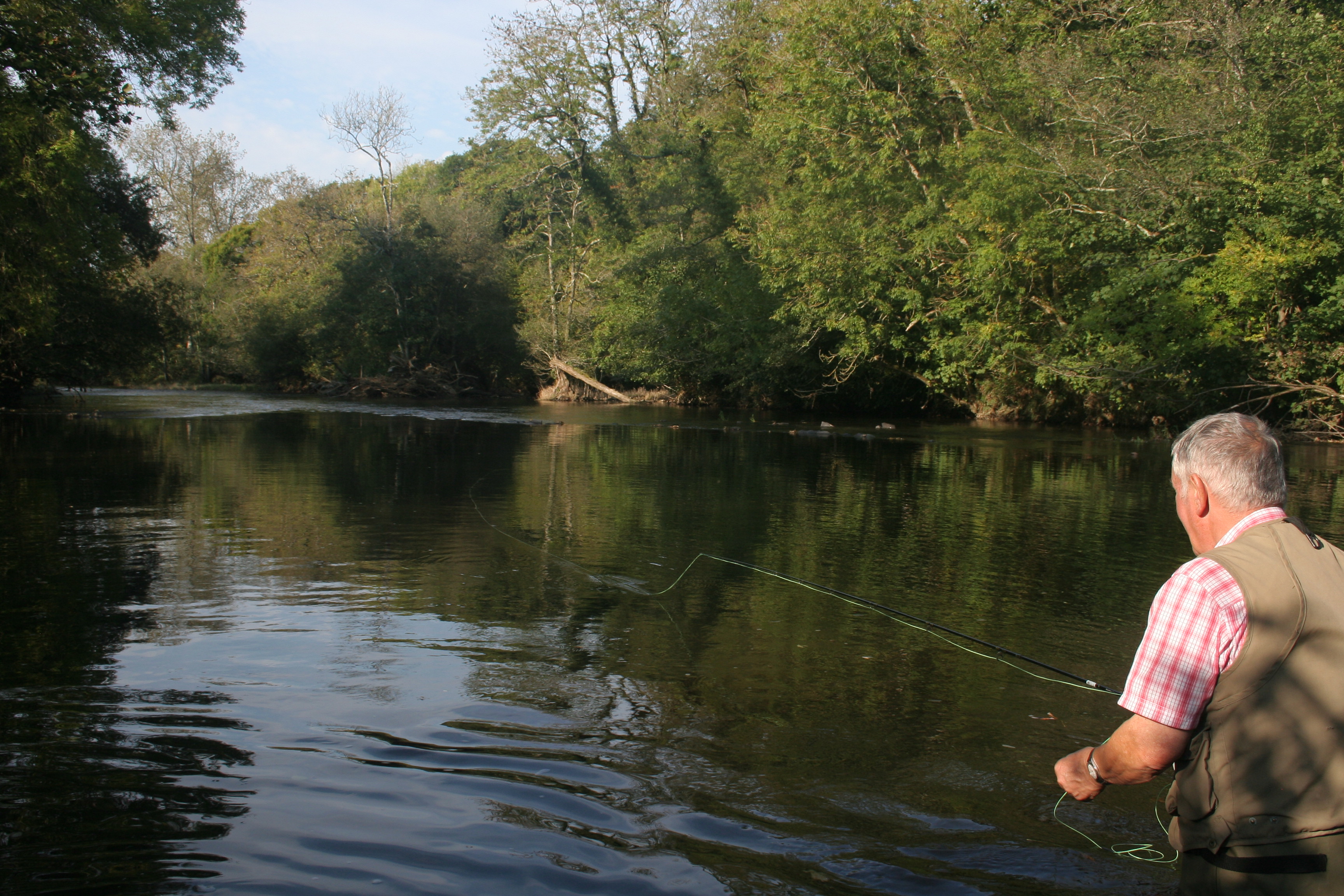
Mill Park – Stunning nets of silver from tranquil waters
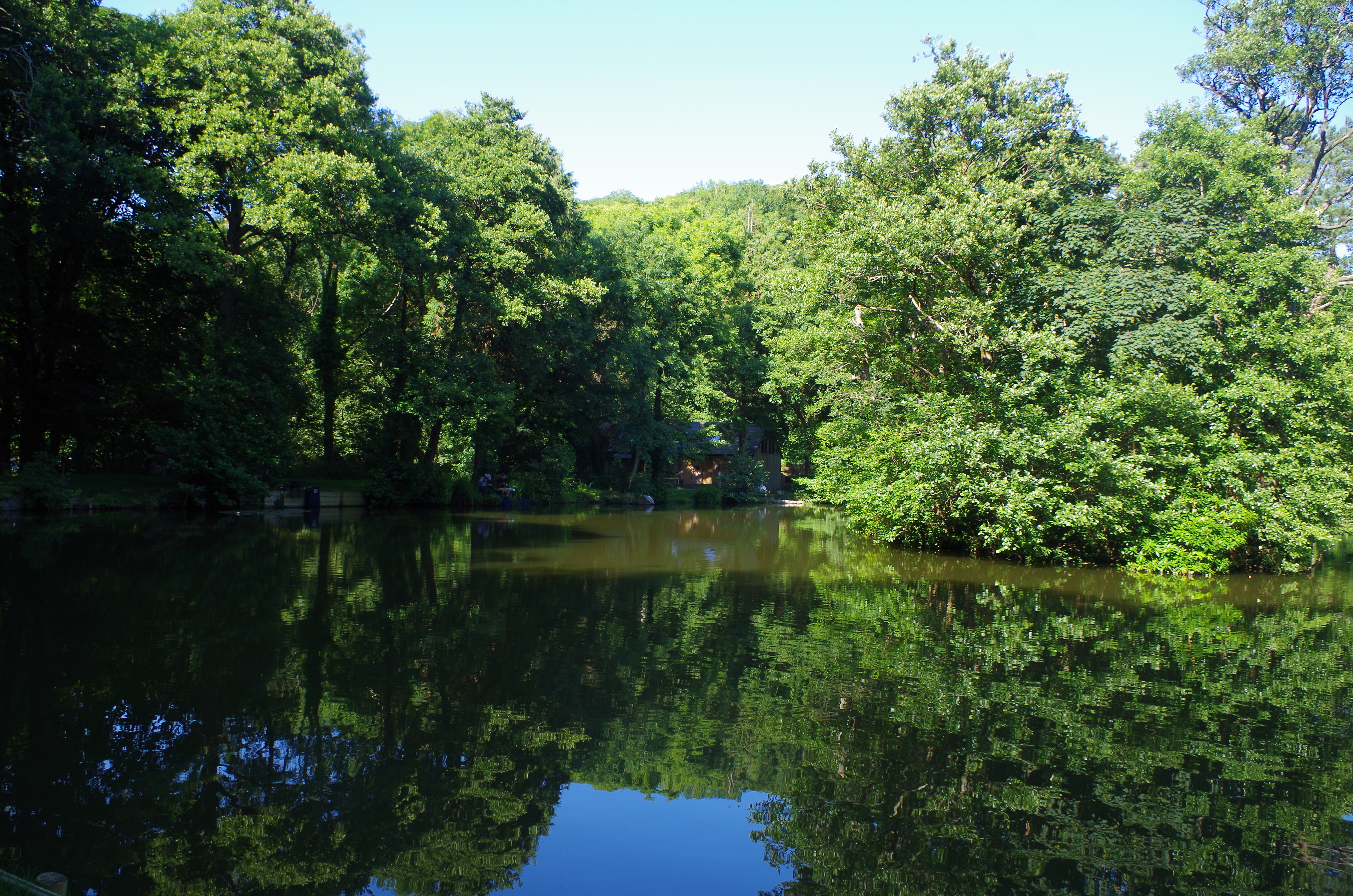 I caught my first coarse fish from Mill Park Pond near Berrynarbor whilst in my early teens a tiny perch with bristling spiky fins and bold stripes. It took a worm suspended beneath an orange tipped quill float in a scene that could have been lifted direct from the pages of Crabtree that evocative book that inspired many young anglers in that age long before computer games and mobile phones. I spent many hours fishing at Mill Pond as a youngster fascinated by the mysterious quality of its tree shaded waters.
I caught my first coarse fish from Mill Park Pond near Berrynarbor whilst in my early teens a tiny perch with bristling spiky fins and bold stripes. It took a worm suspended beneath an orange tipped quill float in a scene that could have been lifted direct from the pages of Crabtree that evocative book that inspired many young anglers in that age long before computer games and mobile phones. I spent many hours fishing at Mill Pond as a youngster fascinated by the mysterious quality of its tree shaded waters.
Roach, perch, bream and eels were our target as young anglers and it was generally simplistic fishing with float fished maggot or worms. As we grew older we sometimes tried for the carp that glided through the water on sunny days appearing almost blue as the shafts of sunlight penetrated the water. I caught my first carp from water on float-fished sweetcorn in 1981 a fish that took close to an hour to bring to the net on just 3lb b.s line. In the early eighties I went on to catch several carp from the lake to almost twenty pounds. The pond also produced several big perch during those years the biggest I heard of was found washed up dead and weighed 4lb 10oz a fish that was at the time very close to the British Record.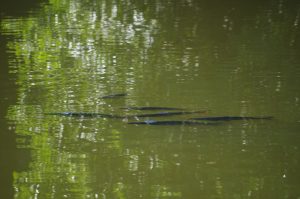
Whilst I always had affection for Mill Park or Mill Pond as we knew it then my visits dwindled as my fishing focus changed and the pond of my youth fell into decline with silting issues and dwindling stocks of fish. In recent seasons I was pleased to hear of good catches of roach, skimmer bream and carp.
I was recently delighted to receive an invitation to visit the lake once again and seized the opportunity to revisit my early memories of fishing. Knowing that the lake held good numbers of silver fish I decided to invite three match angling friends to fish the pond on a summers evening. I would tag along with my camera and attempt to capture some of the ponds magic. They would undoubtedly be far more able to show of the fantastic fishing available than myself.
I am always wary of revisiting childhood abodes as time and maturity can sometimes shatter those treasured memories. Fortunately Mill Park has retained its charm and many of the features from my youth remained unchanged whilst the addition of a few water lilies, sympathetic bank work and de-silting has if anything enhanced the water.
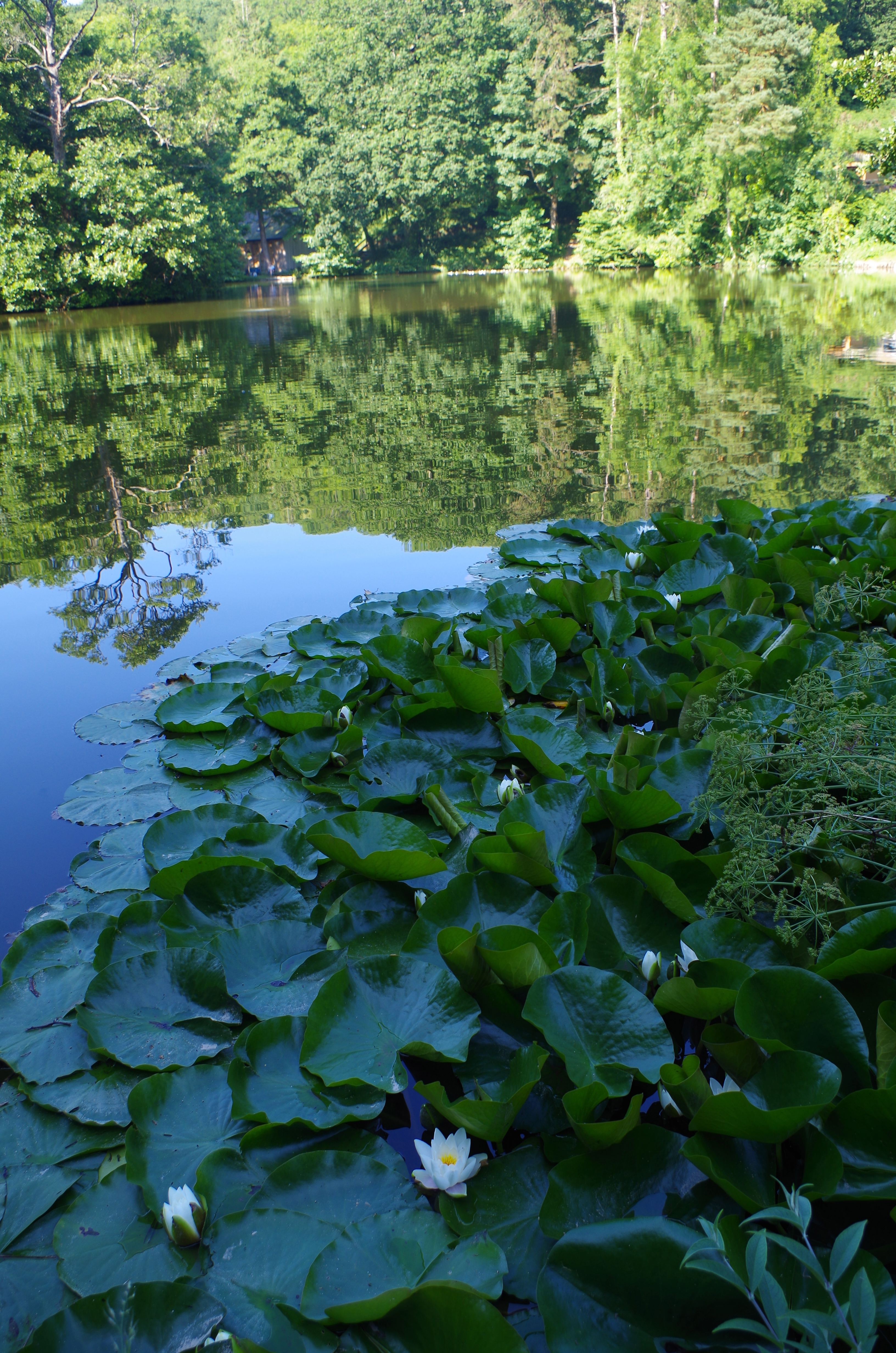
Martin Turner, Neilsen Jeffrey and John Forster are all keen match anglers and all enjoy regular success on the local circuit. On this summer evening in early July I joined them in the swims I had fished all those years ago. Sunlight streamed through the trees into the greenish opaque waters. Carp basked on the surface in the warm sunshine. The quaking of ducks echoed across the water. It was as if time had stood still for over forty years.
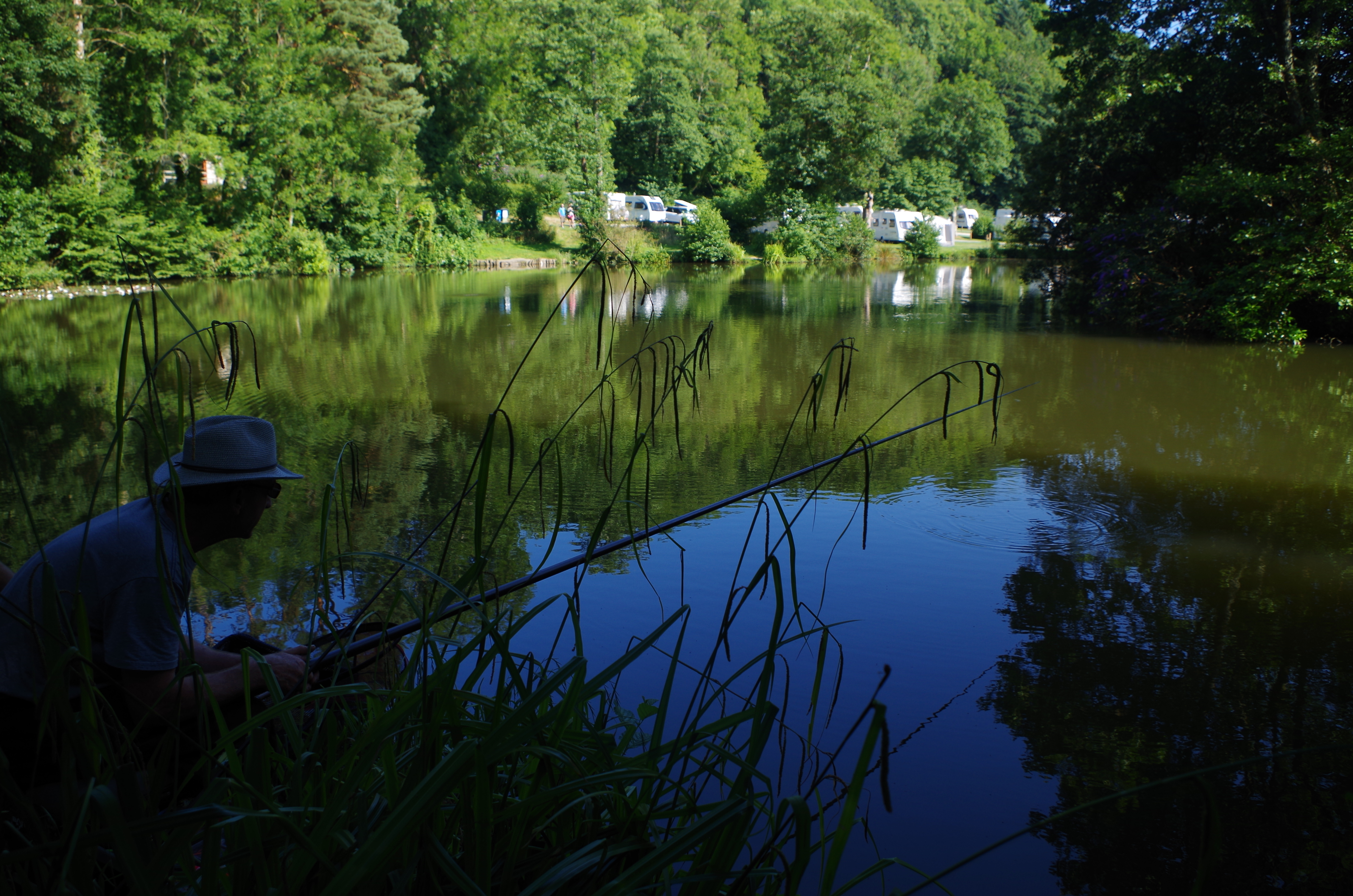
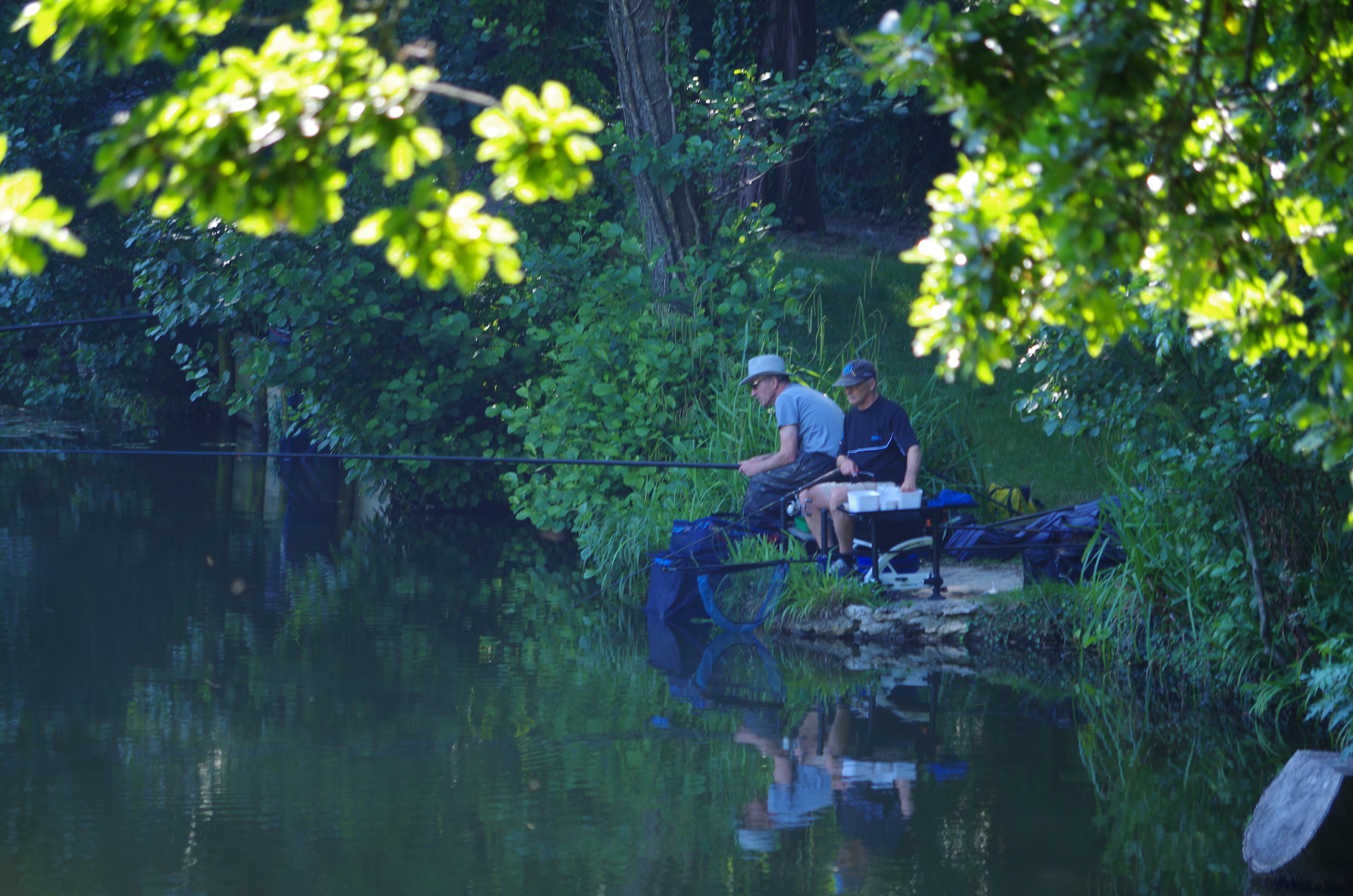
Martin and Neilsen had elected to fish side by side, Neilsen using feeder fishing tactics whilst Martin pole fishing with tares feeding hempseed. I was absorbed immediately watching the quiver tip as it shook and pulled round and the float as it sat optimistically before darting beneath the surface.
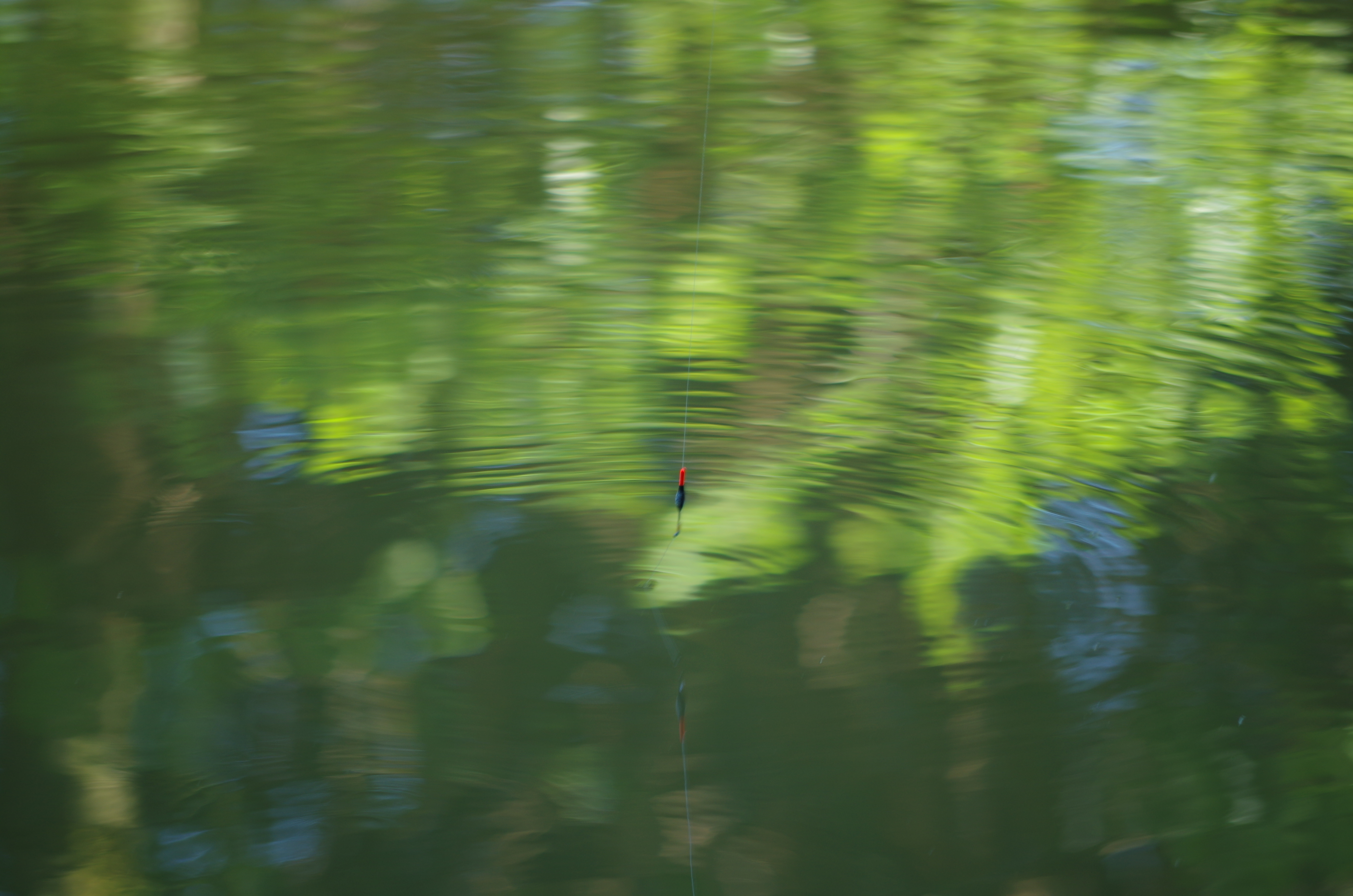
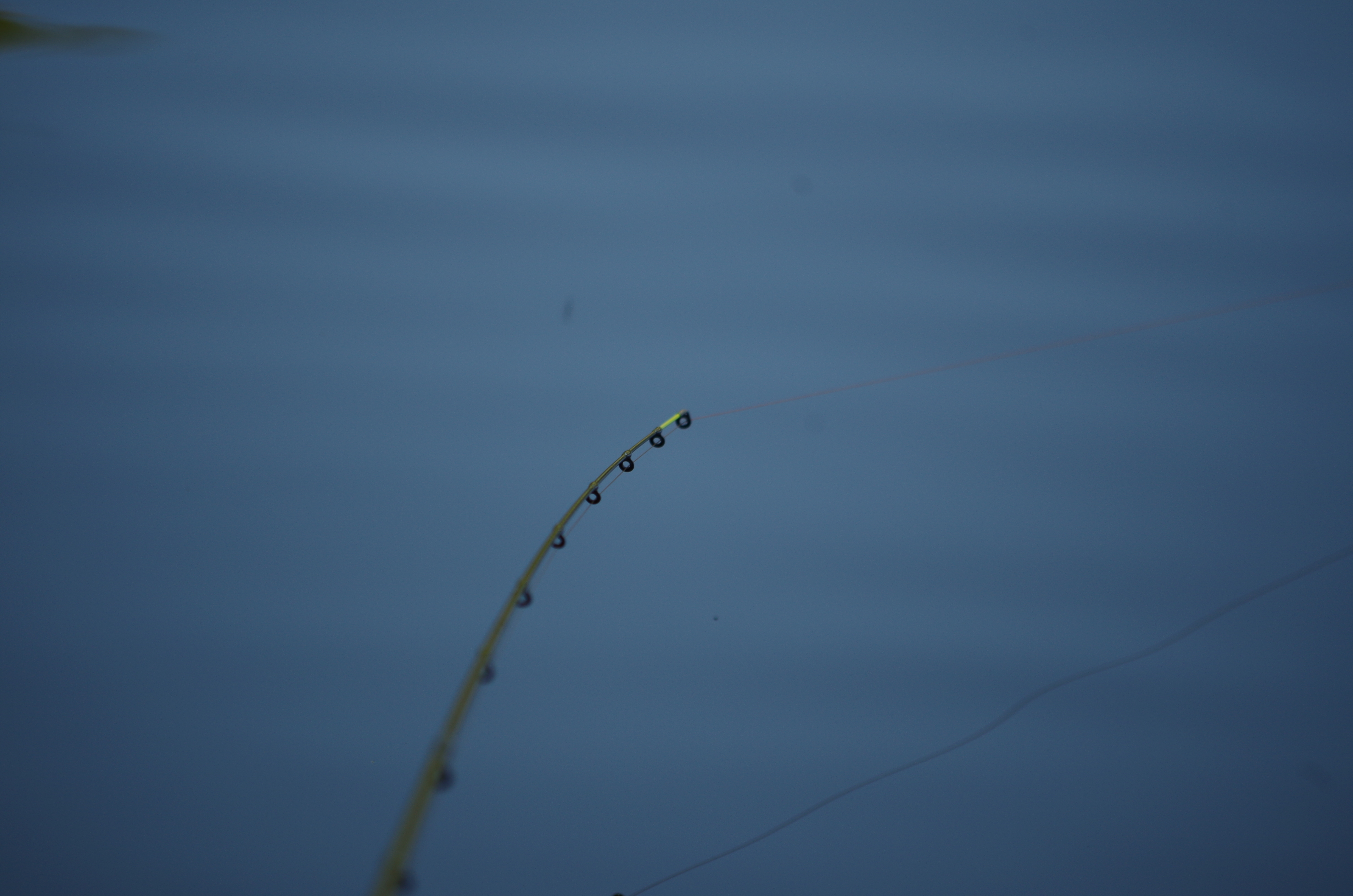
It was fascinating to watch these masters of their craft at work as they constantly made tiny adjustments to their set ups as the fickle fish appeared to constantly change in their willingness to take the bait. It was Martin whose tactics appeared to win over on this evening with quality roach responding to constant feeding with just a few grains of hemp every cast. At times the water seemed to shimmer silver sided roach fed in frenzy beneath the calm surface. Steady feeding seemed to be the key to consistent success with a few grains of hemp fed each cast with Martin getting into steady rhythm of feed, hook fish, unhook, feed and repeat.
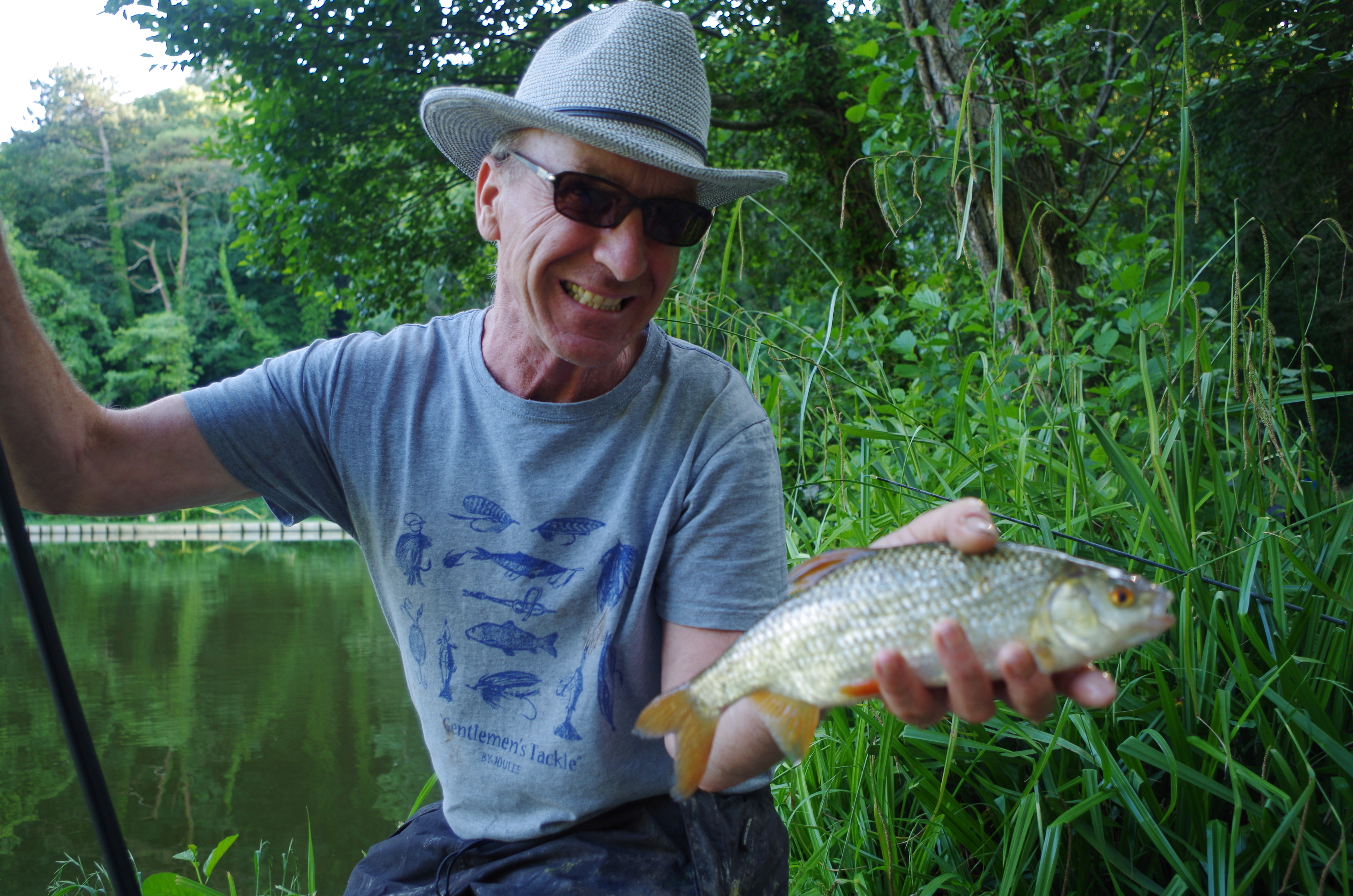
Martin handed me the pole for five minutes and I swung a couple of roach to hand experiencing the sensation of pole elastic and a lack of running line.
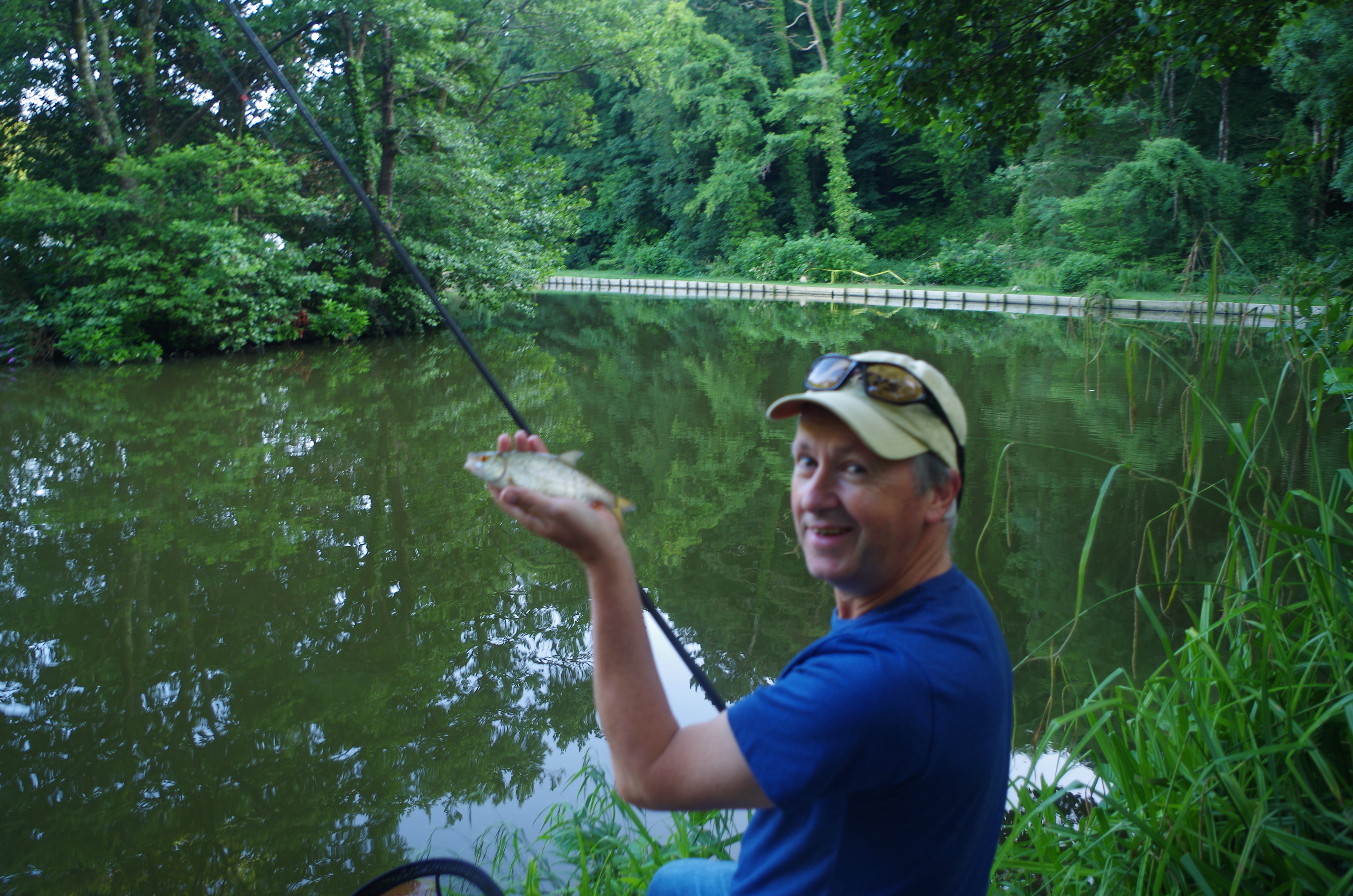
A few yards along the bank John Forster was using pole tactics to winkle out roach from beside a lily pad. He also made brief contact with a carp that smashed the light tackle as it surged for freedom.
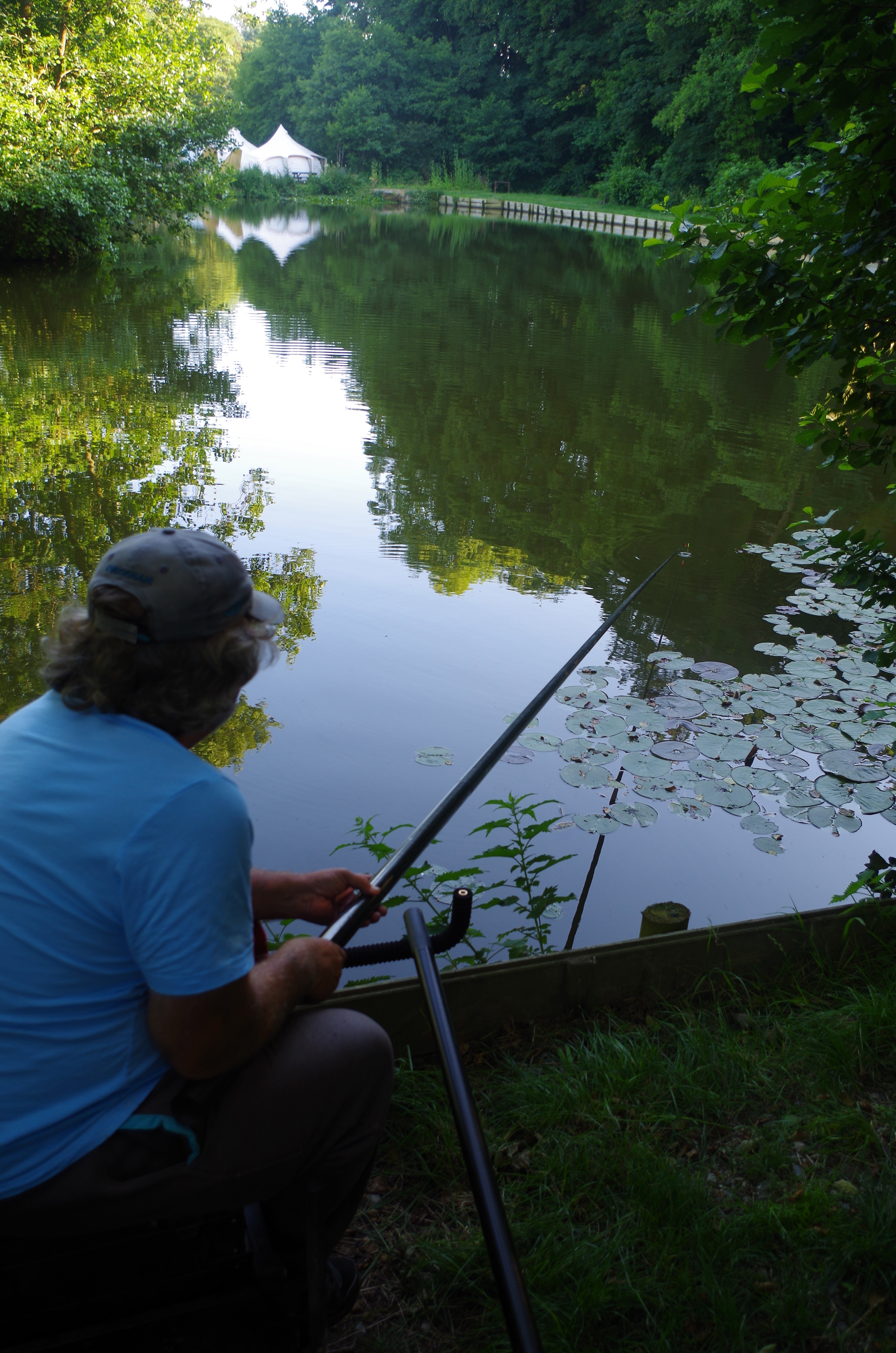
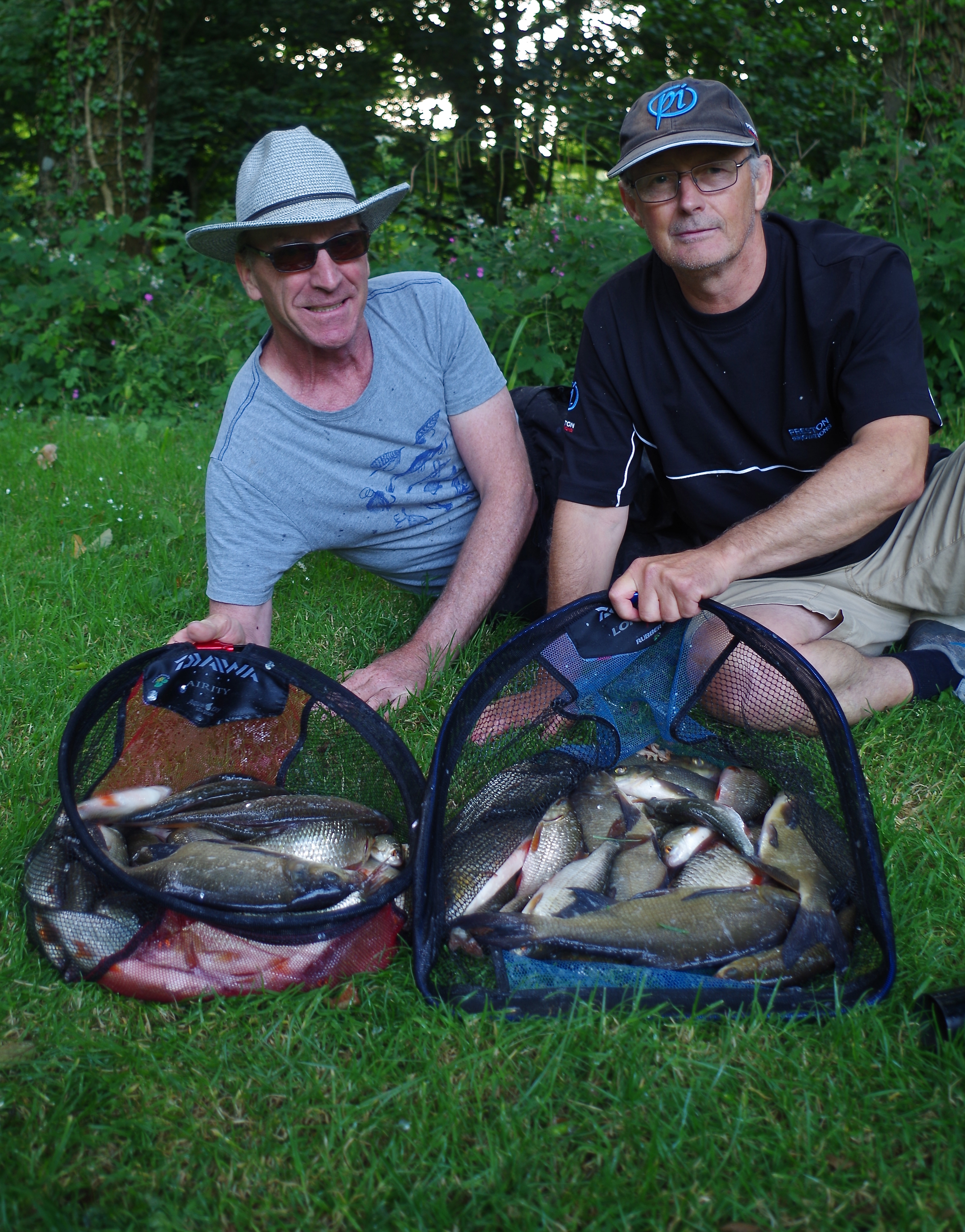
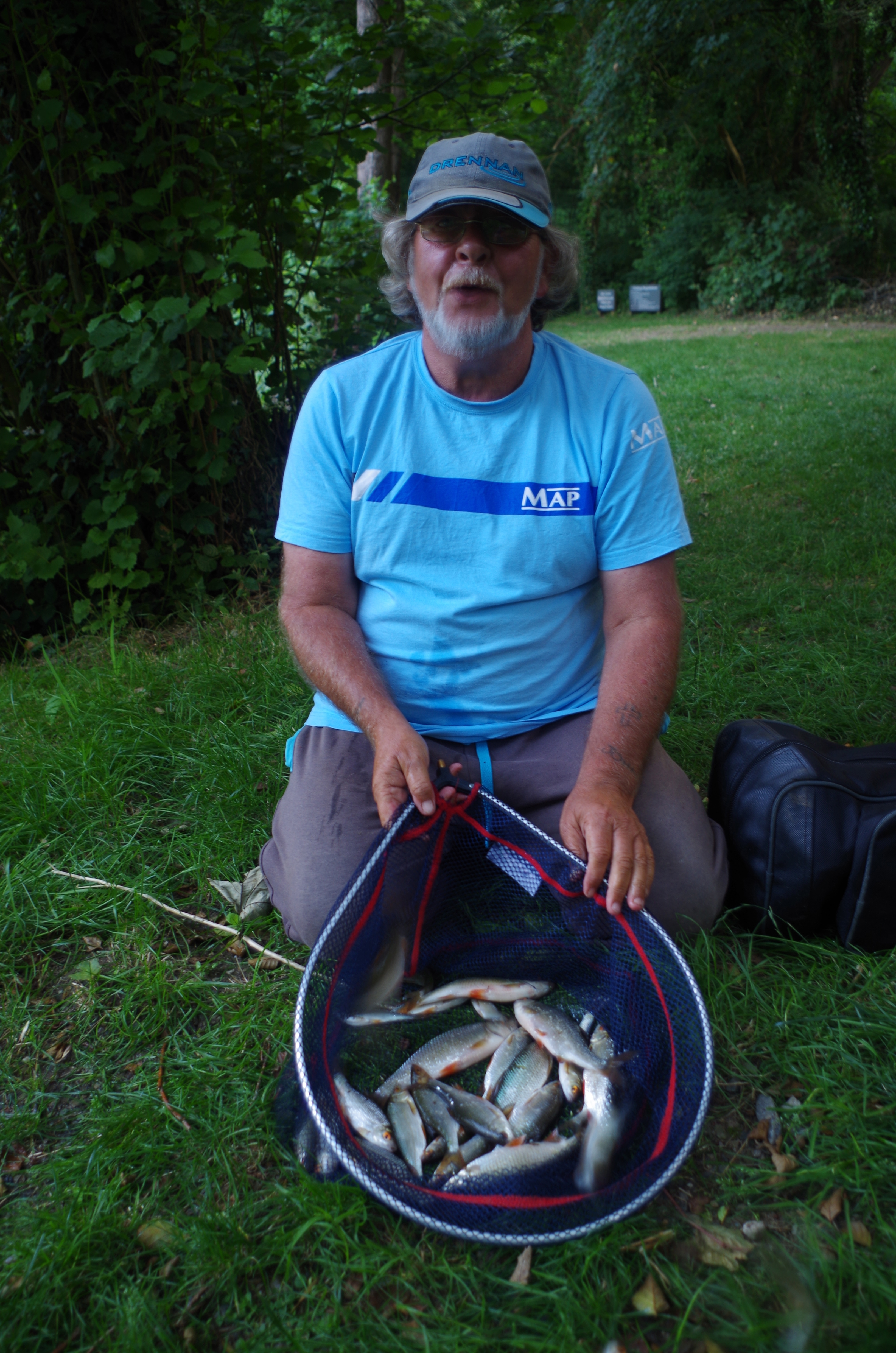
After close to three hours fishing it was time to check the total catch and take a couple of pictures. The owners had allowed us to use keep-nets for this friendly evening demonstration of fishing tactics. Martin, Neilsen and John caught well over thirty pounds, all four of us then retired to Mill Parks on site bar for a lengthy discussion on fishing over a well earned cool pint.
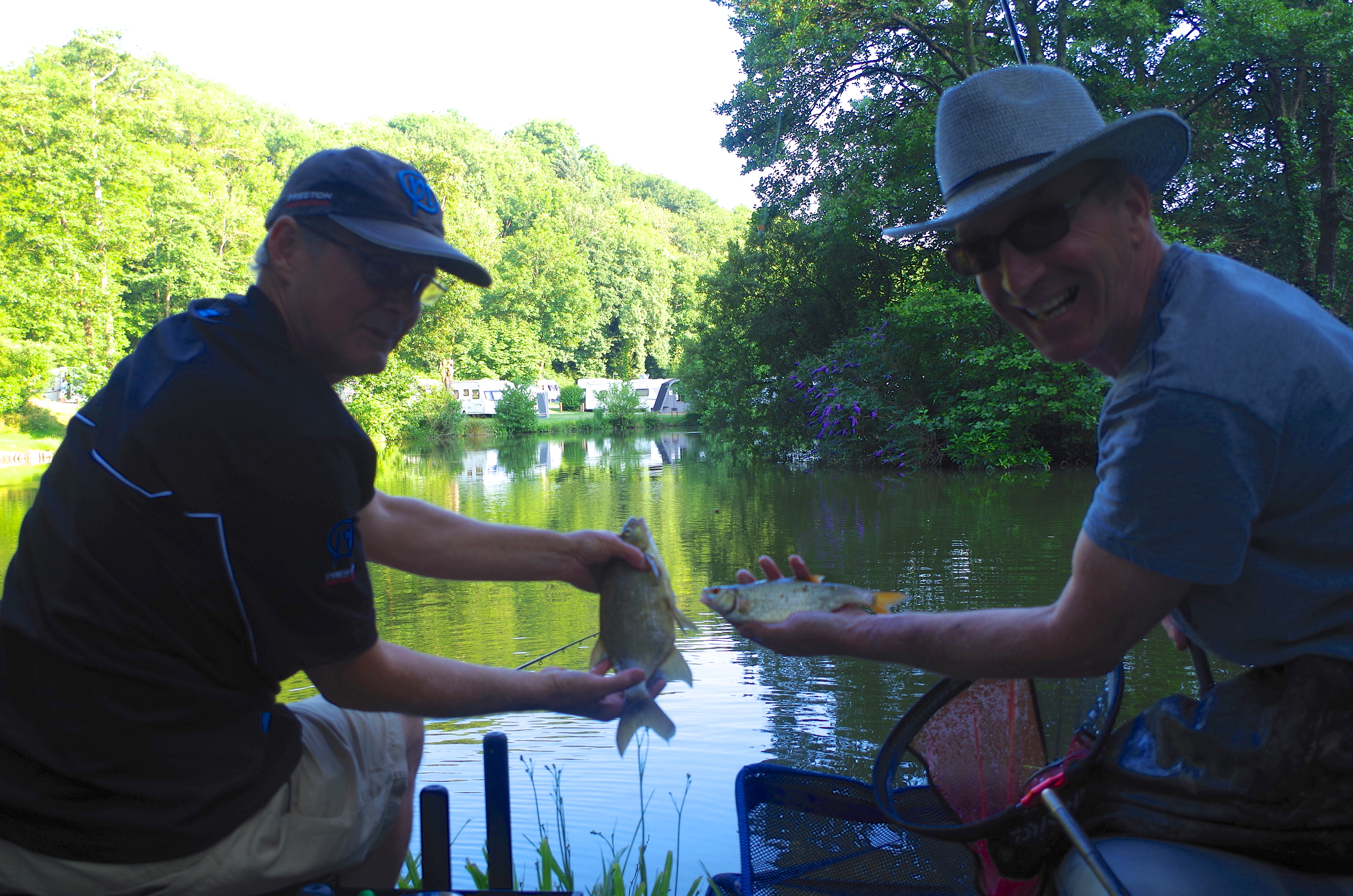
Mill Parks campsite is set in a stunning valley with modern well-maintained facilities. The lake is stocked with carp, roach, bream and chub. As a site for summer camping with excellent fishing it comes highly recommended. It is especially suited for young anglers who should be able to catch their first fish with ease and delight in the excitement of that unique contact with nature that can lead to a lifetime of joy.
Out of season Mill Park offers superb roach fishing with regular matches staged with some stunning nets of silver fish winning matches.
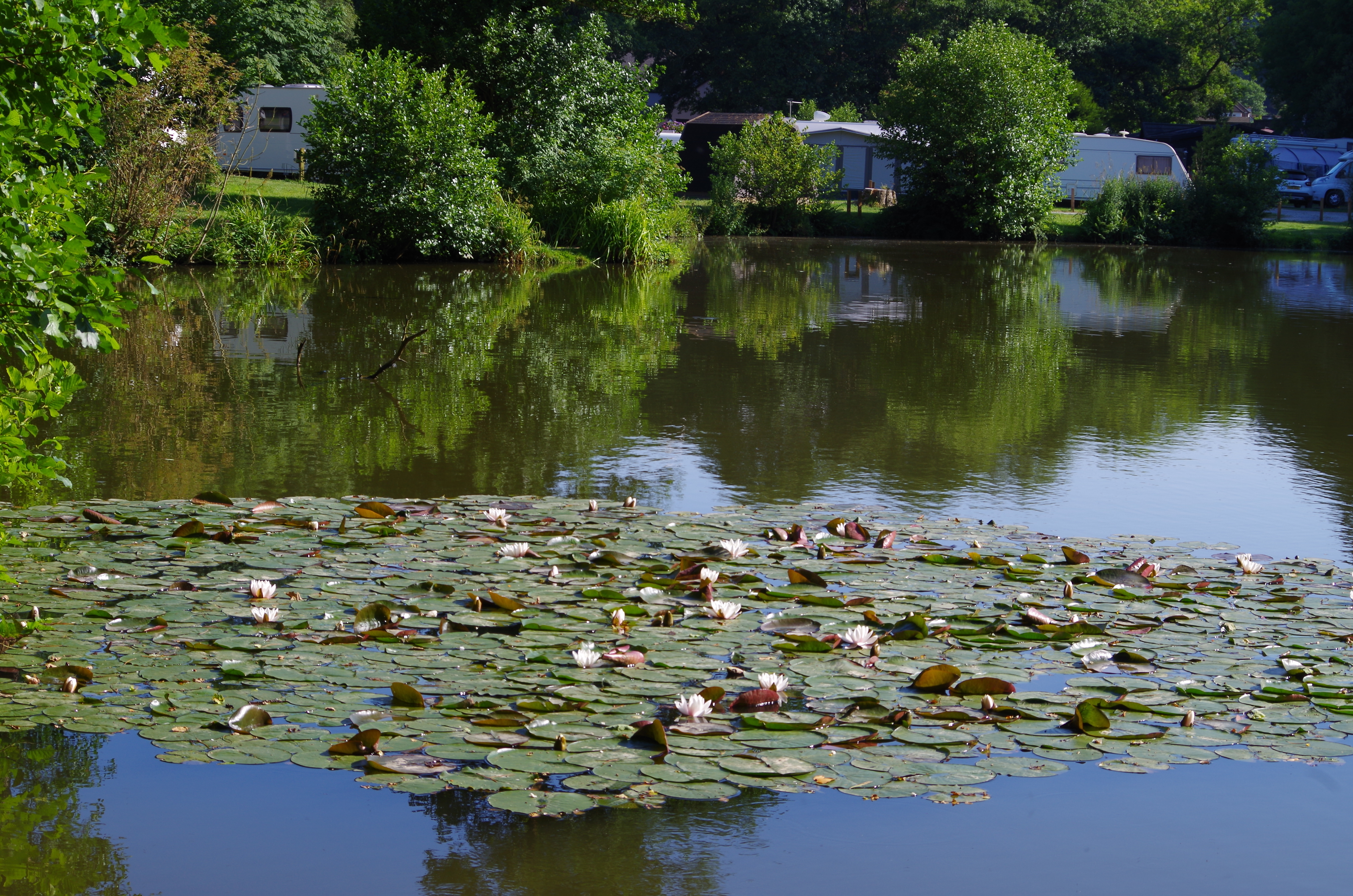
Fun Fishing at Agapi
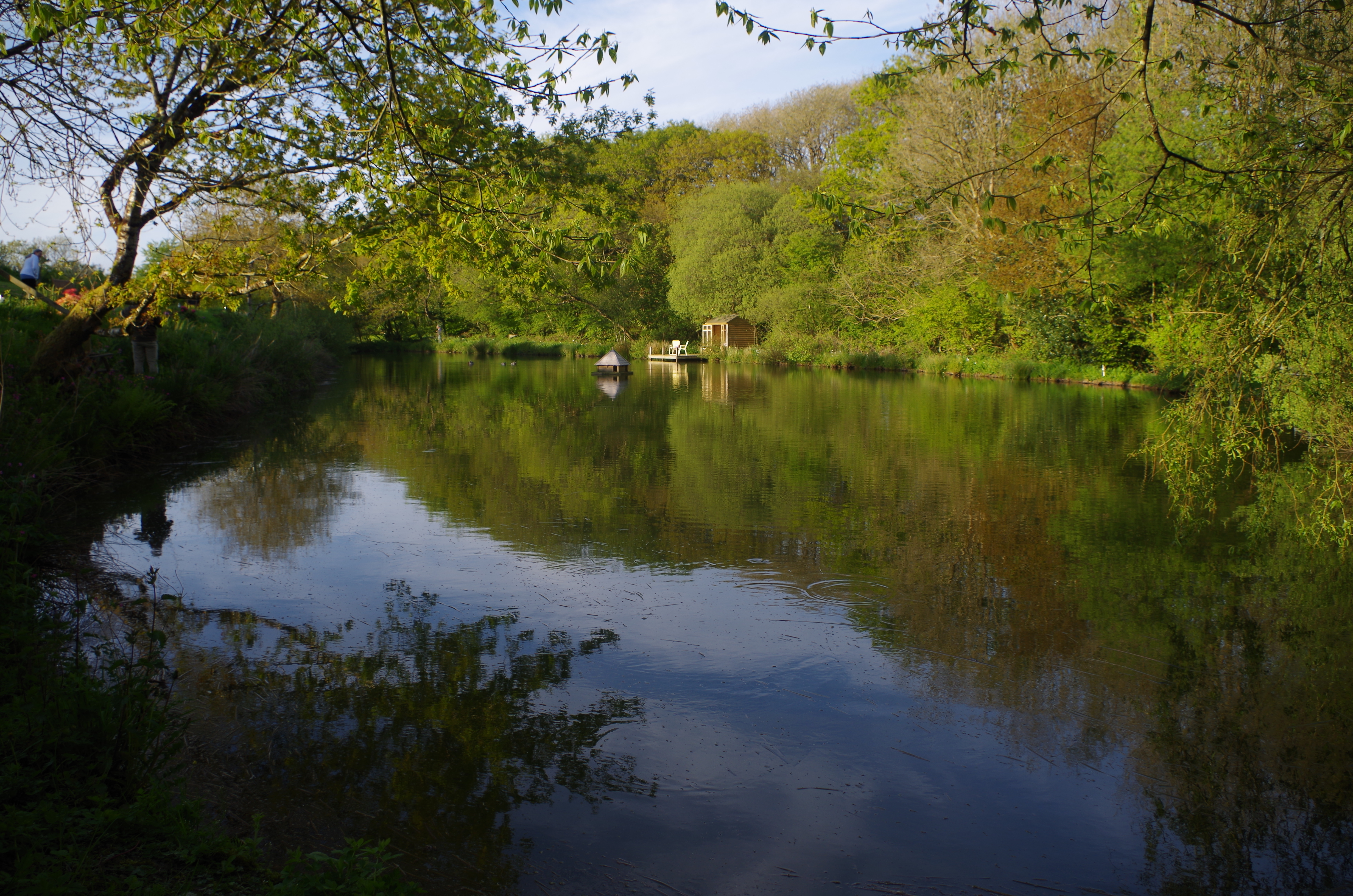
Agapi Fruit & Fishing is a small lake that nestles in a secluded valley a few miles from Torrington and is reached via quiet country lanes that make its discovery all the more rewarding. I had not visited since last September when I had visited with my wife Pauline and son James and wrote a review on the fishery. http://www.northdevonanglingnews.co.uk/2017/08/24/unique-fishery-agapi-fruit-fishing/
This is a fun fishing venue teaming with rudd and a few carp that have probably grown to a little over 5lb maybe more. I had persuaded Snowbee ambassador Jeff Pearce to join James and I on a fun trip to try and catch a carp using fly fishing tactics. James would act as back up using free lined stalking tactics to get a carp for the camera if Jeff and I failed. Jeff is a dedicated Fly Fisher and loves to catch his fish on Fly Tactics whilst I tend to be a little more flexible in my approach generally using whatever tactics are within the rules to catch. On this occasion however I was going to remain strictly Fly Only!
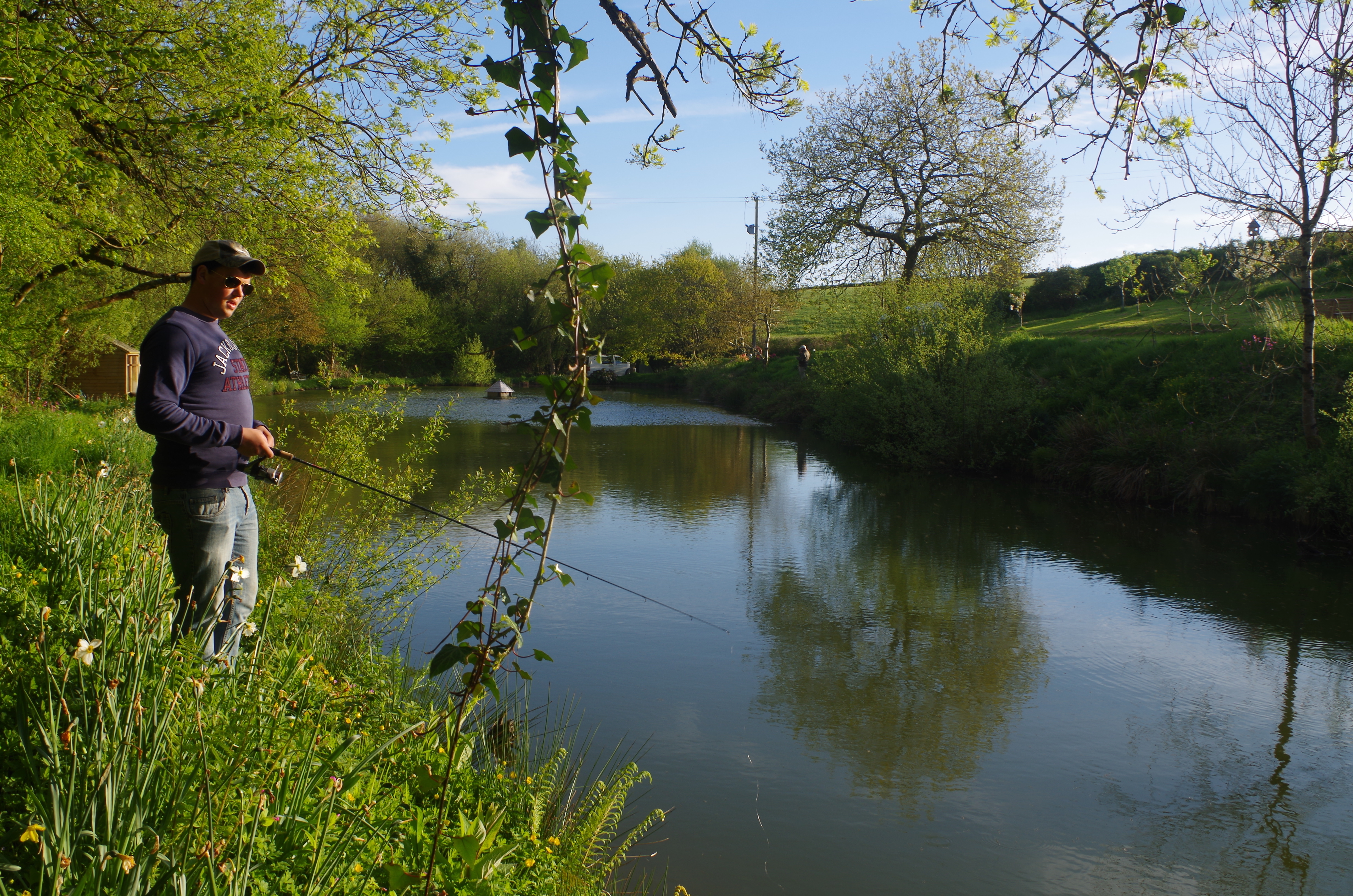
Jeff was first to tempt a fish a small golden scaled rudd.
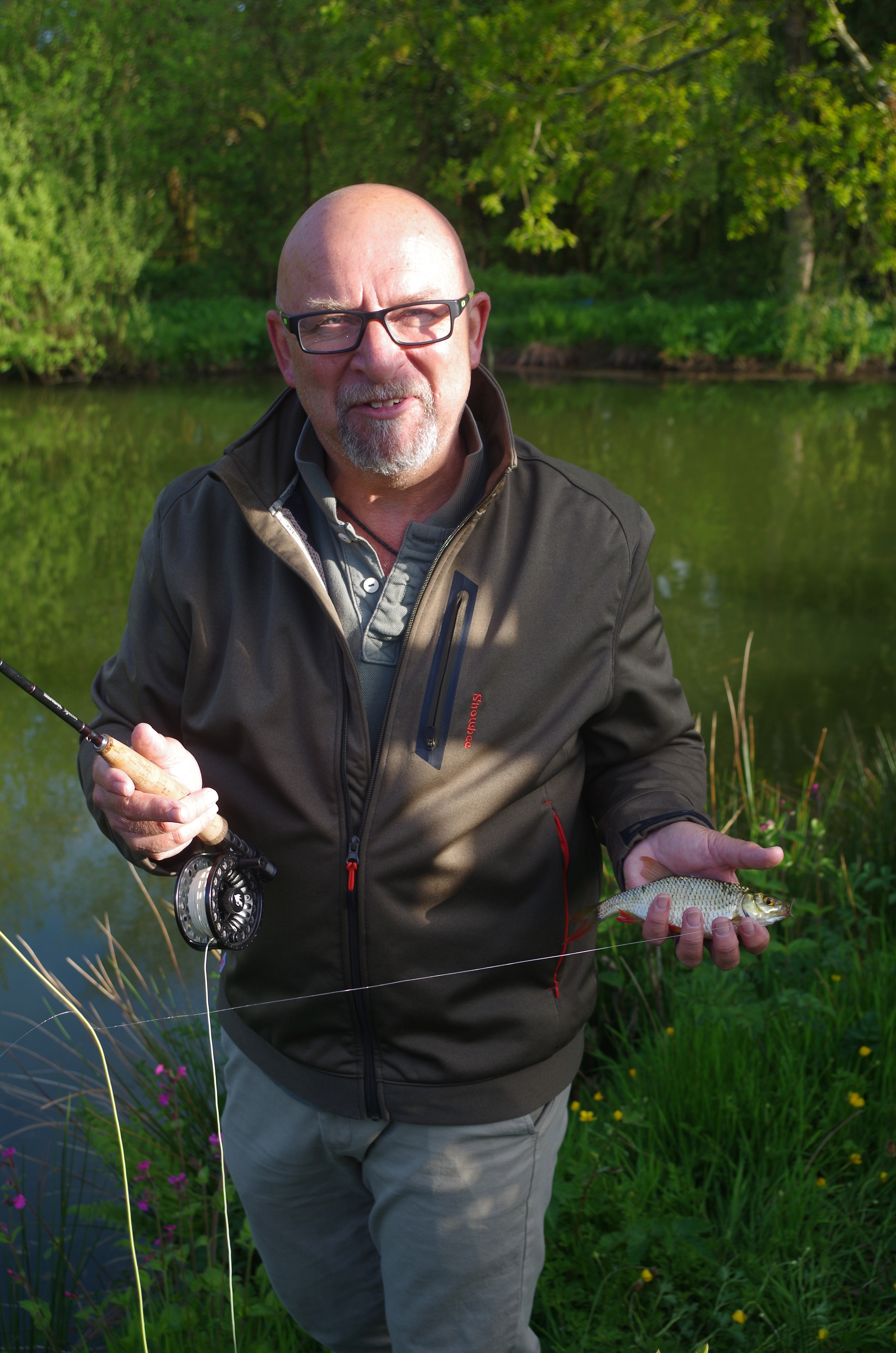
This was closely followed by a couple more tiny rudd on Jeff’s small nymph patterns. The fascinating aspect of this being that once a couple had been caught it seemed that the lakes population had been briefed for catching consistently became frustratingly difficult.
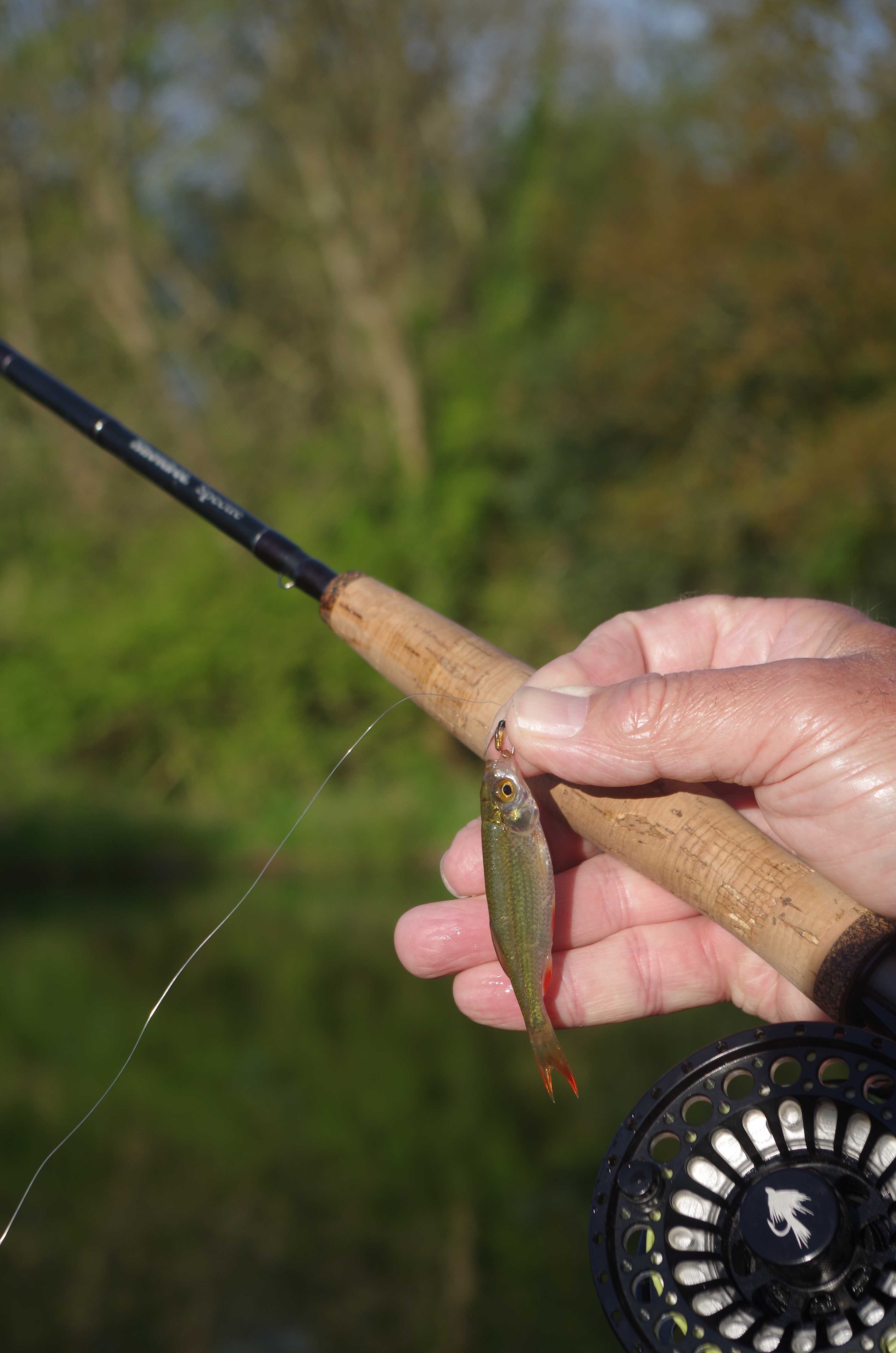
James was persisting with the traditional bread tactics and caught a pleasing rudd early in the evening and glimpsed a couple of carp cruising the margins.
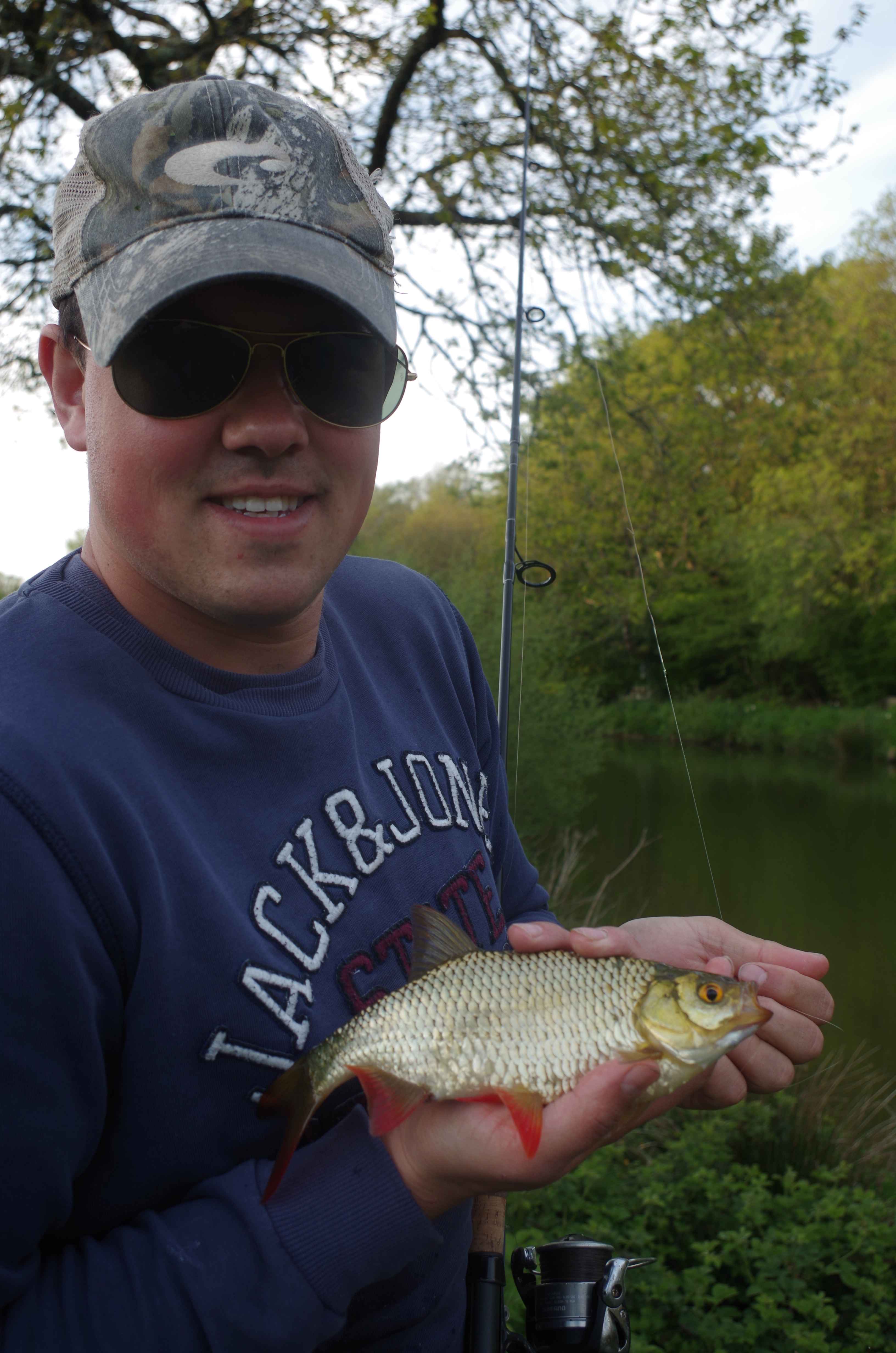
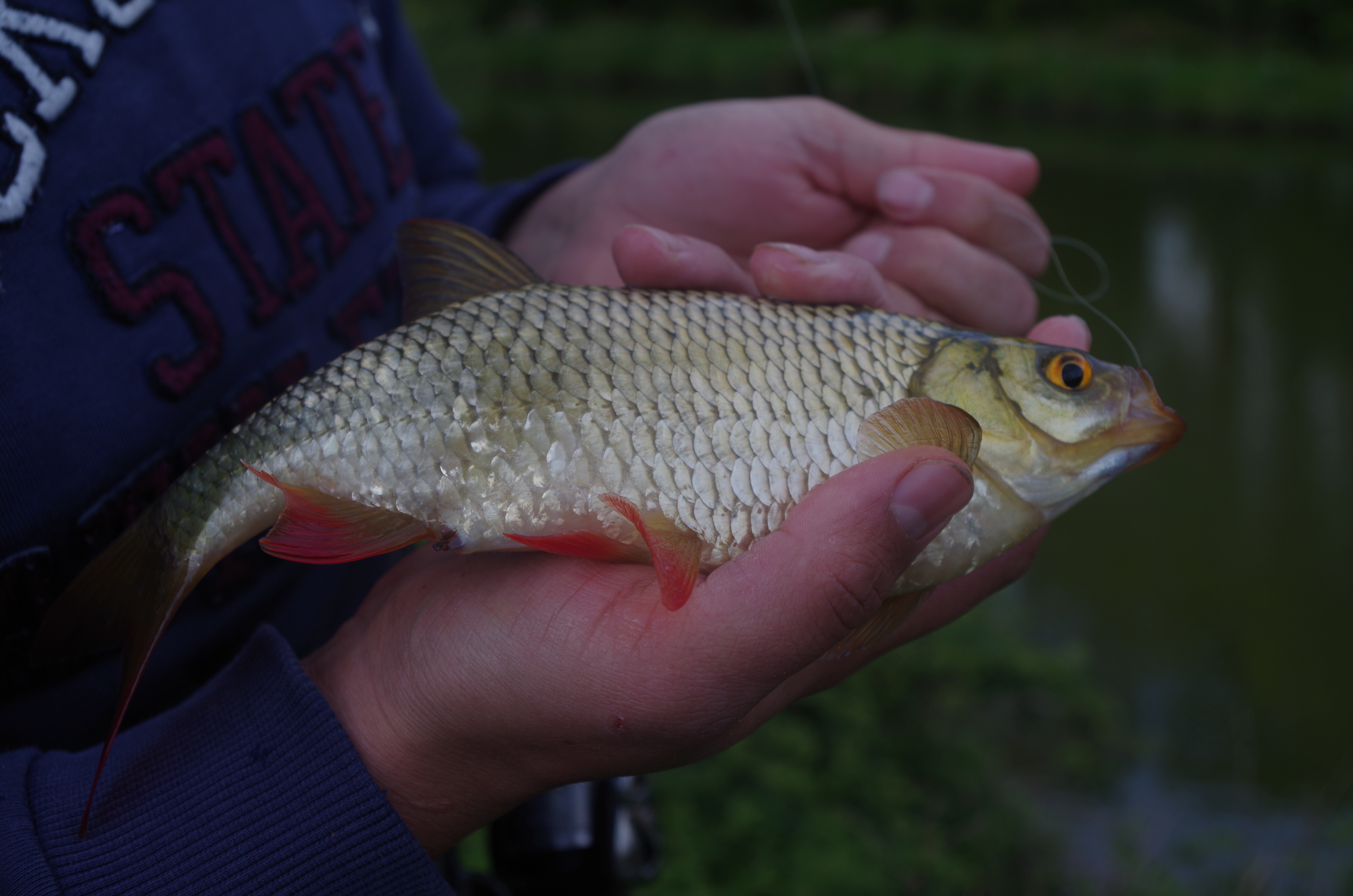
After a couple of hours we retired to the lakeside Summerhouse for a well earned cuppa with delicious ham and chutney sandwiches, salad, crisps and Kit Kat’s. Special thanks must go to Sandra for making us welcome and ensuring we didn’t go hungry.
Fortified we returned to the fishing I dabbled my chum mixer fly in the margins and watched the rudd nudge and nibble at it whilst I hoped to see a carp materialize from the green tinged water and devour my offering. Jeff and James had crept up to the shallows where James had spotted a few carp. I strolled up to see how things were going and Jeff said a good carp had slurped up a bit of floating crust from amongst the reeds. James had modified his tactics and was using a chum mixer on the hook that slowly sank with the weight of the hook. This tactic proved successful as the line suddenly zipped tight and the rod hooped over as a carp surged to and fro stirring up clouds of silt as it fought gamely before eventually slipping over the rim of the net. Sandra appeared at this moment to congratulate James on catching the first carp of the season a handsome mirror carp of around 4lb.
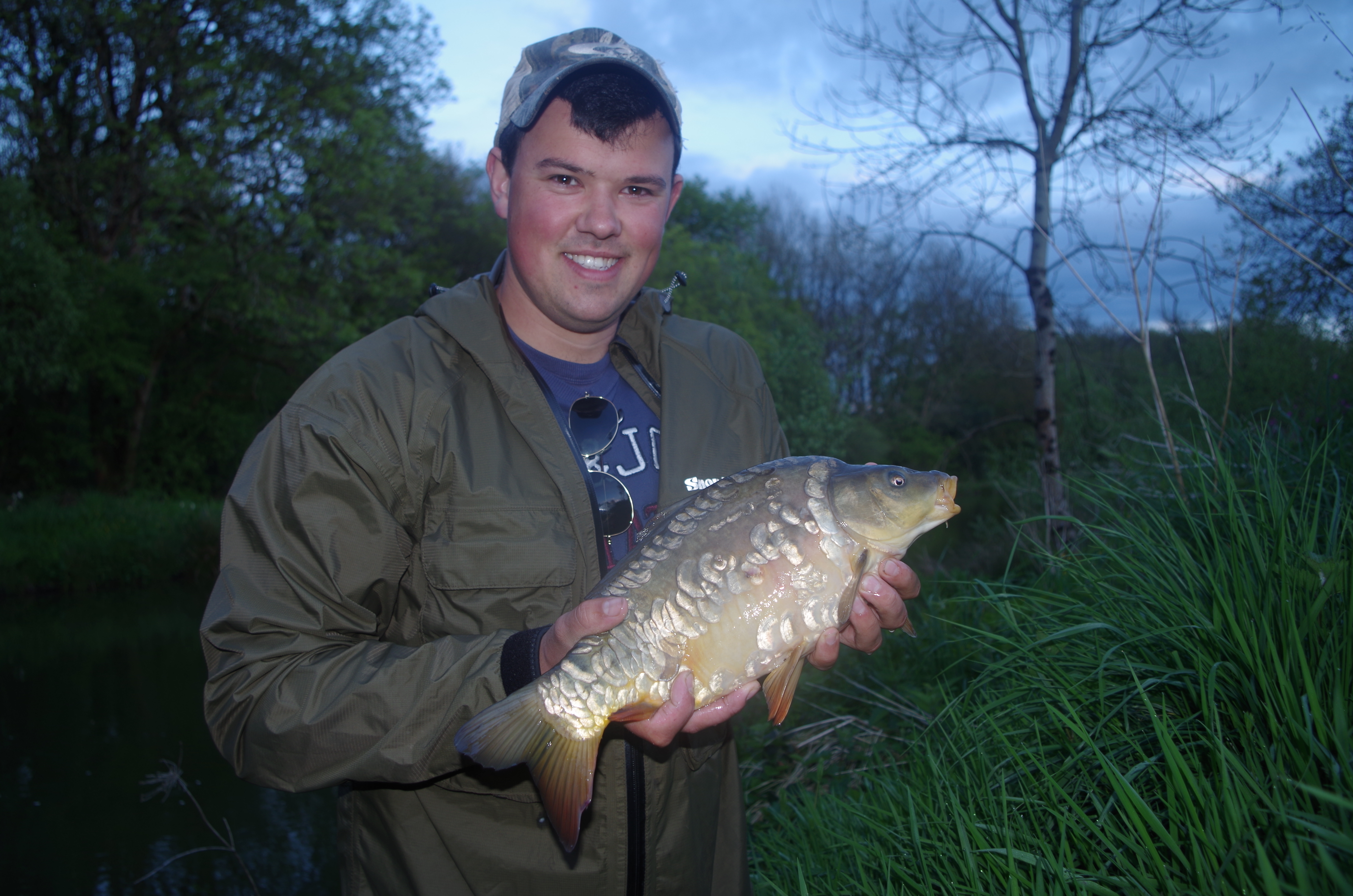
Agapi is the perfect venue for a family fishing excursion with hordes of small rudd to ensure plenty of action and the chance of a carp to set the pulse of the young angler racing. This is thie sort of water all young anglers should start off on for many anglers today set their sights so high that they reach the summit too early without enjoying the journey. Of course old timers like me still get immersed in the fascination of the chase and the challenge of catching whatever the lake holds.

If you are going to Agapi I suggest you give Sandra a ring for directions and to book the lake and secure a few hours of tranquil seclusion deep in the countryside.
Braunton Bait Trip to Foreign Shores
Craig McCloughlin runs Braunton Baits and has just posted this report.

Just got back from another Braunton Bait Box / FishTrek stingray trip abroad.
This trip wasn’t to disappoint!! We managed a lot of different species and a lot of personal best’s broken several times over
Between us we landed
Eagle ray to 25lb +
Butterfly ray to 80lb+
Stingray ray to 170lb
Smooth hound to 21lb 10oz
Hammer head shark
Benito
Lizard fish
Temperature?
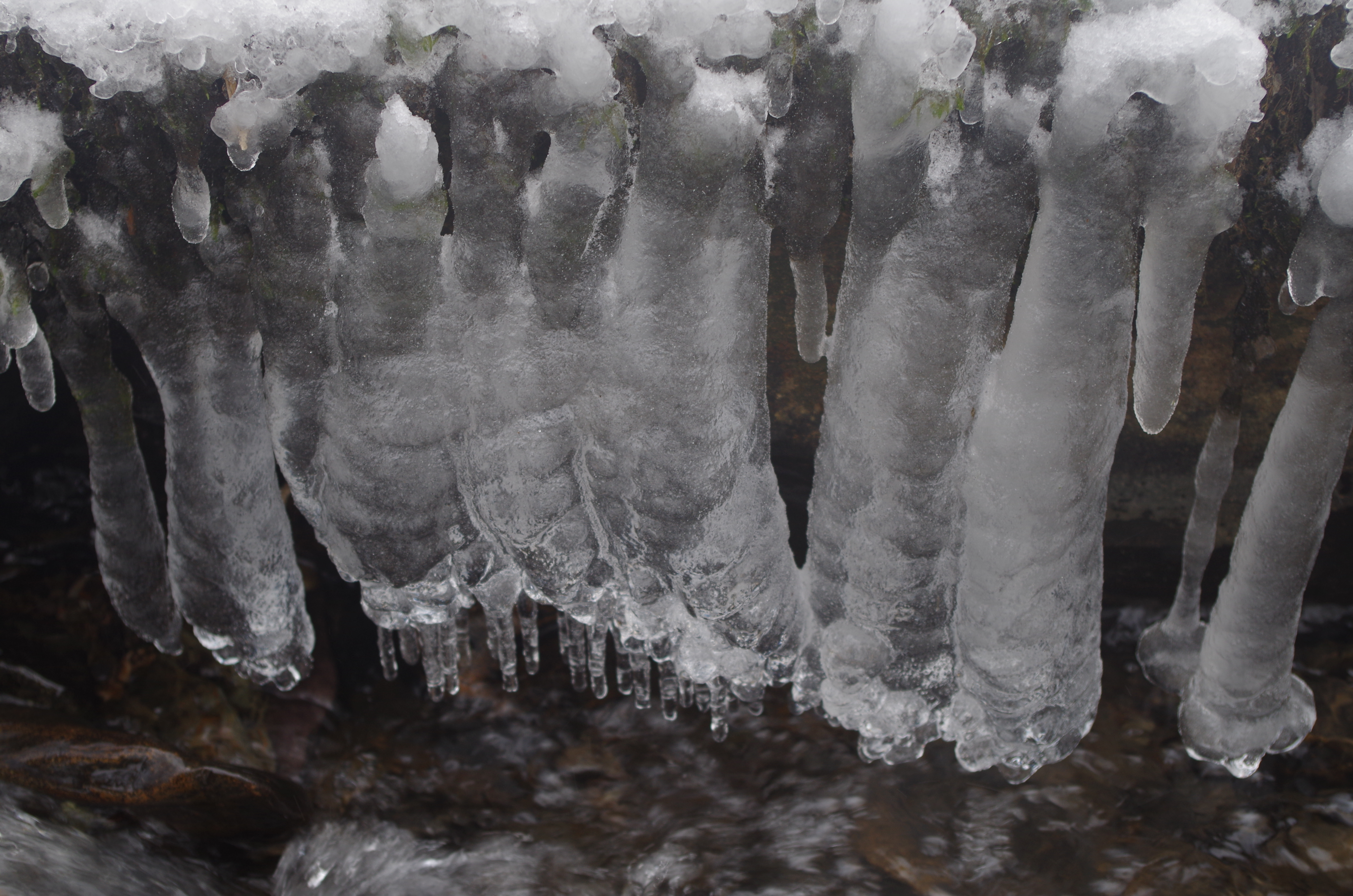
I was reading a post on Facebook relating to shark and impact of temperature on their migration and behavior and this got me thinking about temperature and fishing prospects. The post was at first relating to blue shark and if the recent beast from the East would delay the start of the shark fishing season off Cornwall. Anglers commented that the optimum temperature for blue shark to feed is around 13 degrees. Porbeagle shark are apparently less affected by temperature and can be found throughout the year around our coastline.

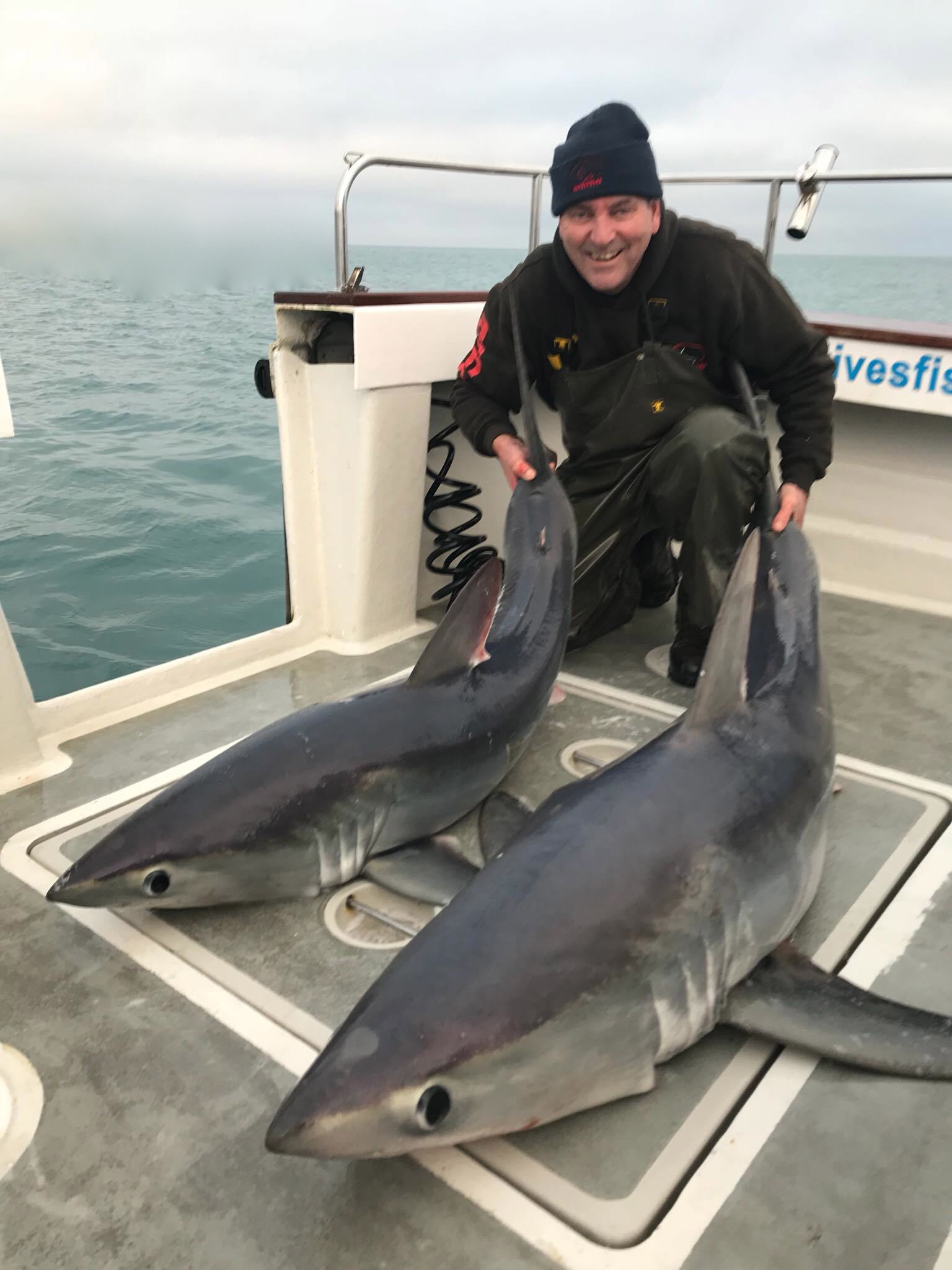
I used to consider grey mullet a fish of the summer months yet we now catch them all year. Does the cold water temperature stop them feeding. I often fish a local venue where the mullet are clearly visible and ignore baits for the majority of the time. They do this all year yet when I fish in winter I blame water temperature. Is this relative? With heavy snow melt dropping the water temperature I would feel success unlikely but will a rise in temperature trigger feeding even if the water rises to a temperature that is still low for the time of year.
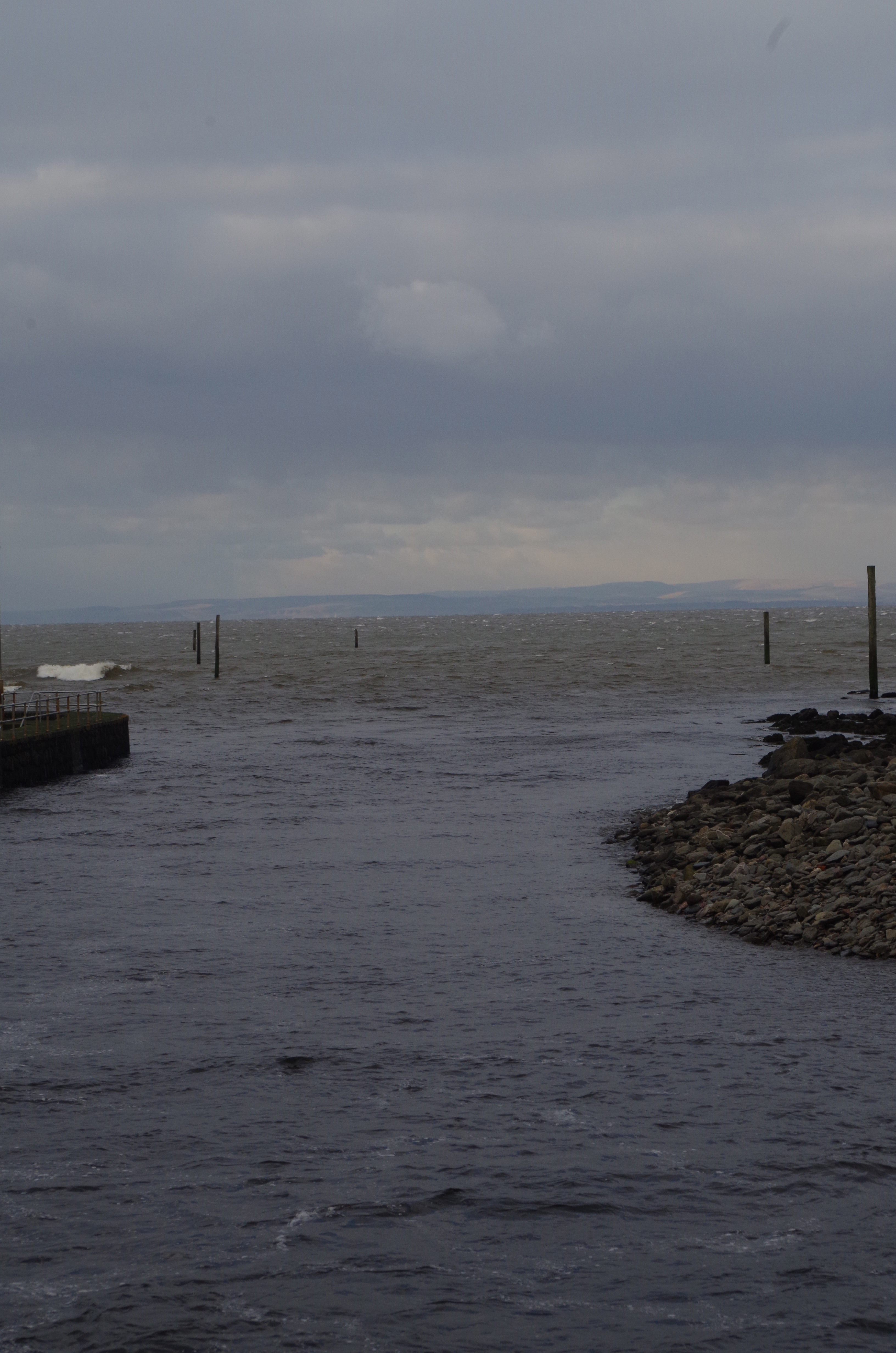
A bitter east wind is undoubtedly bad for fishing but why? The temperature of the water does not drop that quickly so why is it so poor for fishing?
Each species we fish for is impacted upon differently by water temperature. Water temperature can impact upon both feeding, migration and breeding. It is this complexity that makes angling so fascinating. Whatever we fish for water temperature impacts upon the behavior of the fish we seek. Each species has its own niche of coarse and we think of winter cod and summer bass. We consider mackerel a fish of summer yet I saw some caught in Norway where water temperatures are far lower than South West England even in mid July when we were there.
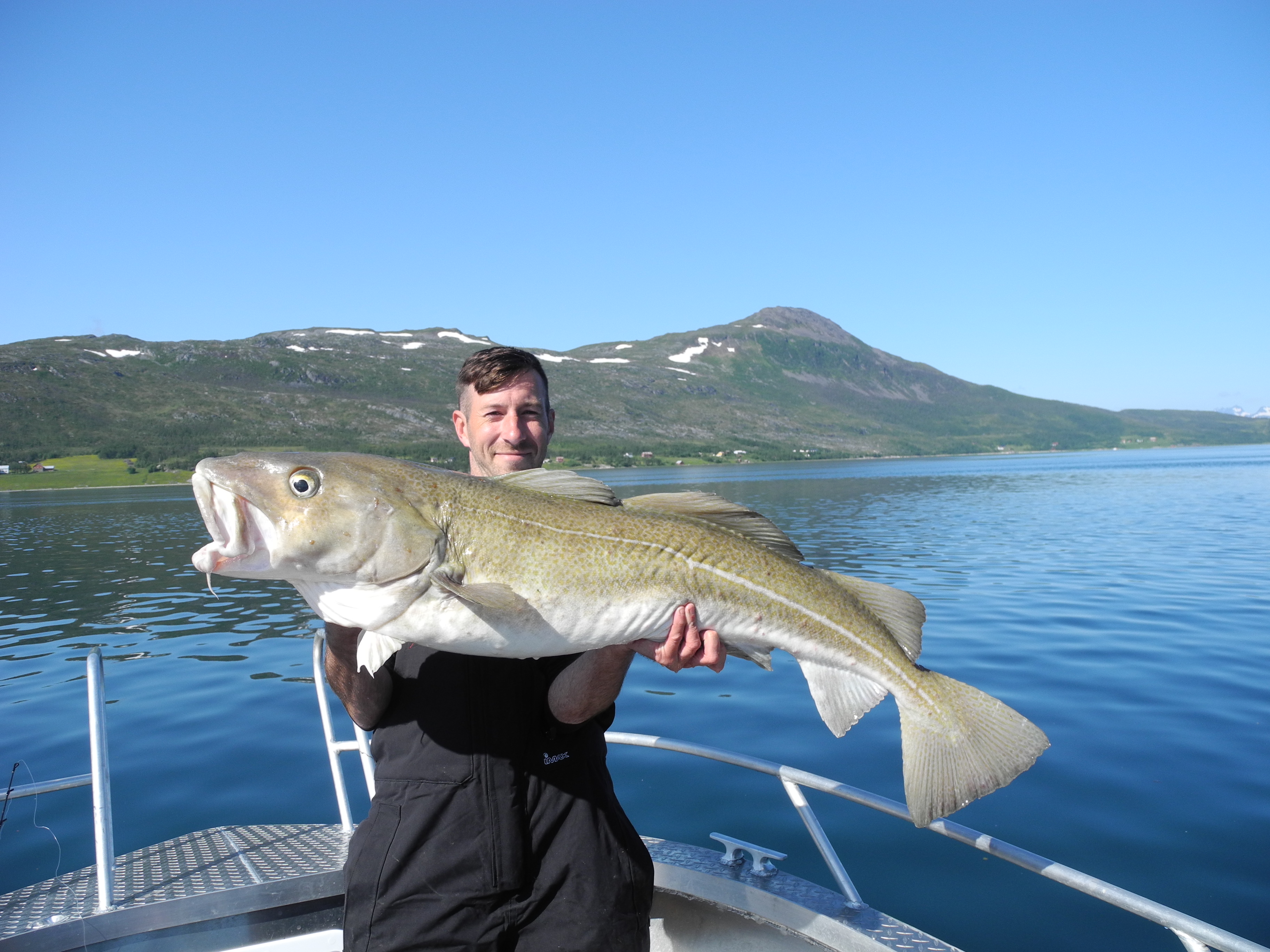
In lakes we now catch carp all year and these were once a fish of the summer months. The reason we catch carp all year round is of coarse twofold in as much that we fish for them and expect to catch them. They have more food and are kept more active by anglers fishing for them.
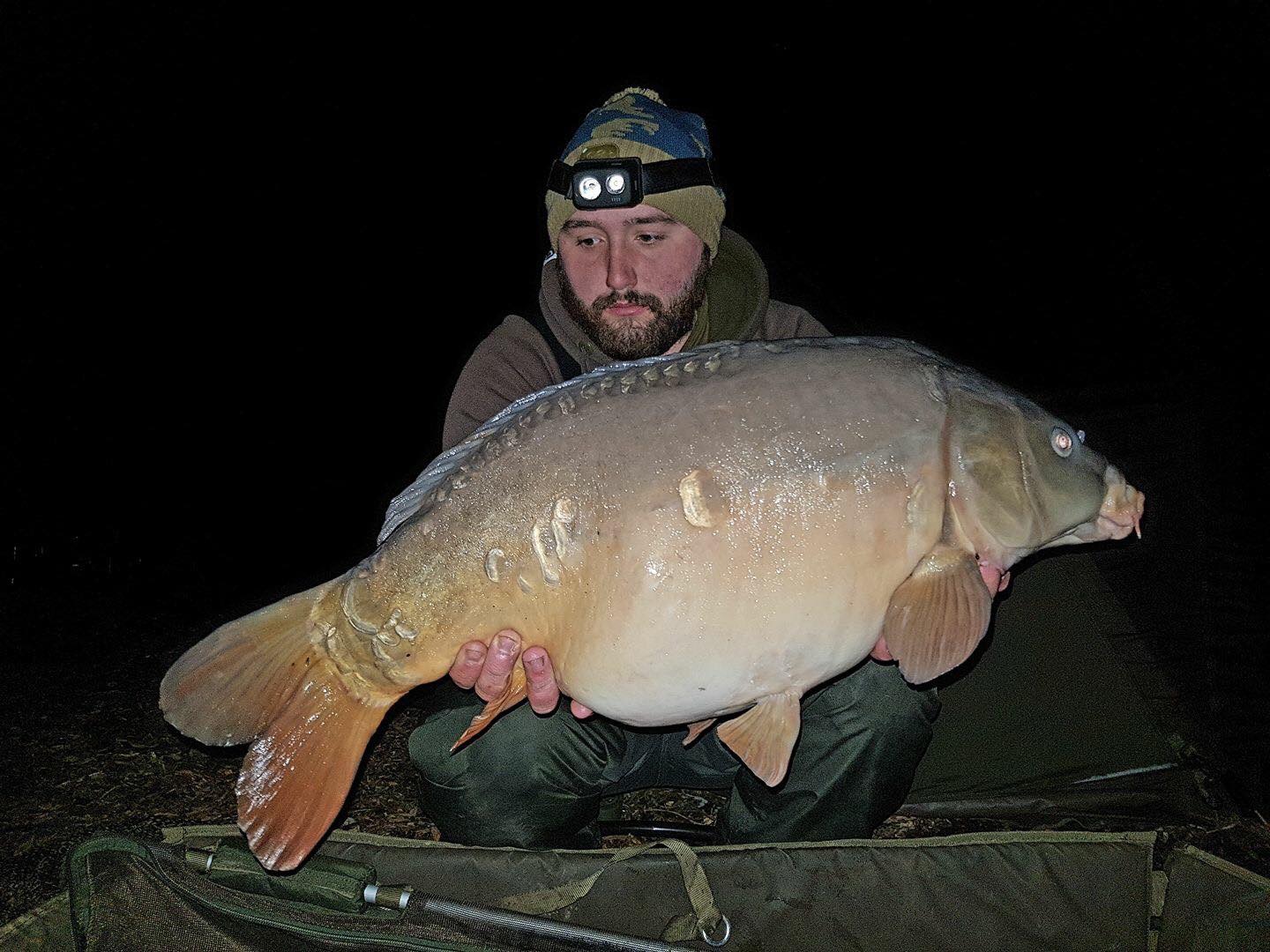
Winter Carp

I have perhaps rambled around a bit casting a few thoughts with no real direction in relation to water temperature and fishing but then that’s what anglers do at times just think of fish and fishing. Temperature is a big factor in fishing for many reasons. For my own sake I say roll on summer but how much does it impact upon the fish we seek?

